Funny Golf Instructor Snap Load My Feet
60 essential tips EVERY golfer will always need to know
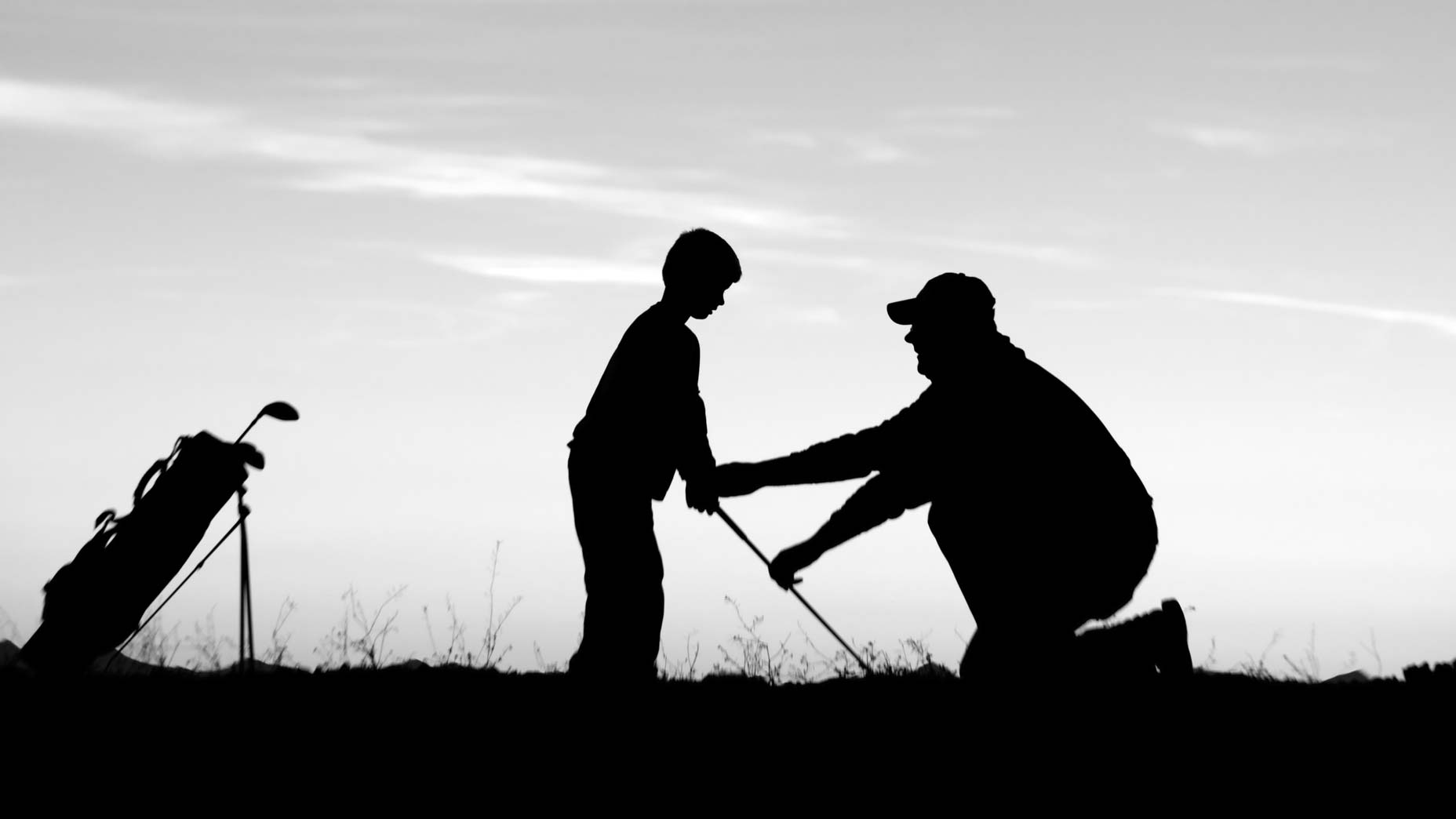
These tips are essential for golfers of all skill levels.
Getty Images
Golf is back, and it's imperative you get your game in shape for the summer. So we've assembled an all-star cast of GOLF's Top 100 Teachers, PGA Tour players and social media's instruction stars to help you shake off the rust and play your best golf. Here are 60 essential tips every golfer needs.
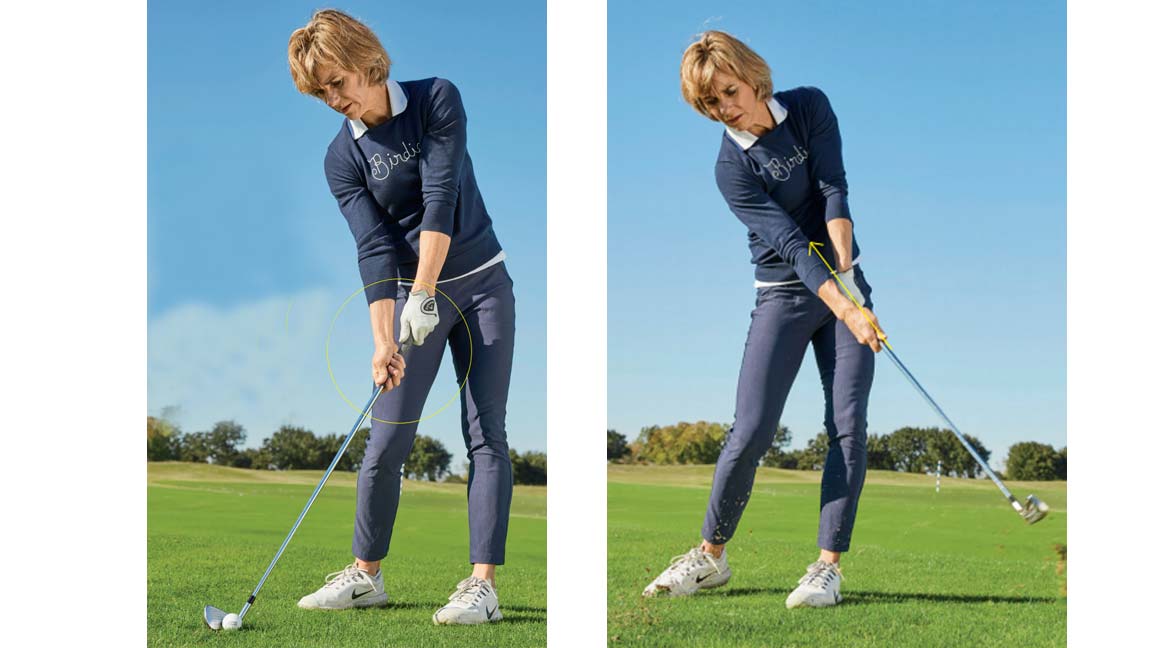
1. Swing with an anti-slice grip
If you slice, it's probably because you're not closing the clubface fast enough through the hitting zone. To improve your ability to deliver a square clubface (relative to your path), make practice swings with your hands split apart on the grip.
Hold the club in its normal position with your gloved hand, then slide your lower hand down to where the grip meets the shaft (photo, left). Separating your hands like this makes it easier to square the face through impact and keep the handle pointing at your belly button as the clubhead slings out toward the ball. Make sure to brush the grass aggressively. If you can recreate the feels in the drill on real swings, you're money. —Krista Dunton
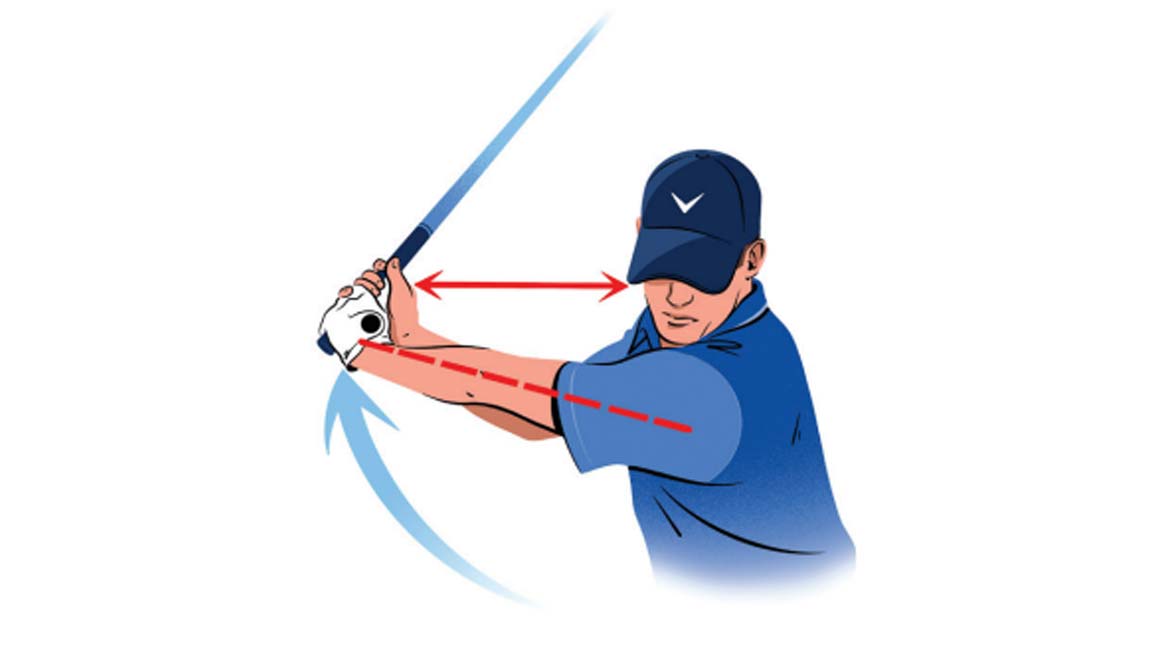
2. Give your backswing a power boost
As you start the club back, make it a goal to get your hands as far away from your right ear as possible and maintain that width all the way to the top of your backswing. A wider swing arc automatically fuels a faster downswing and eliminates the chopping action that causes pop-up drives and slices.
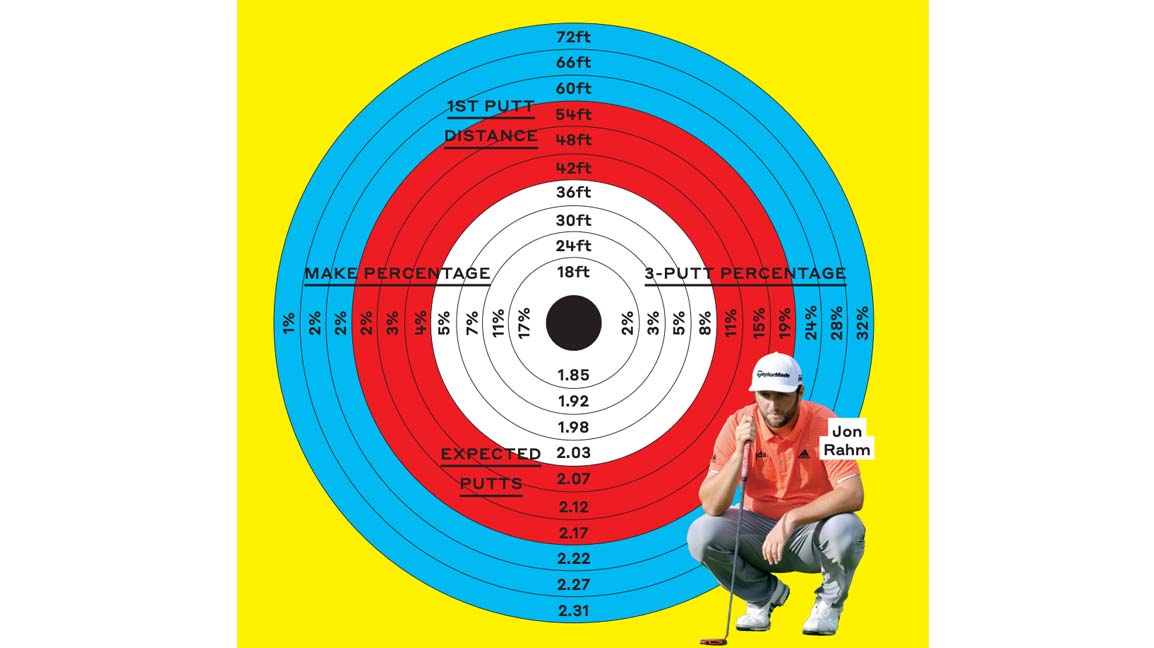
3. Learn the benefits of consistent lag putting
Pros rarely 3-putt inside of 40 feet, but do so almost a third of the time from outside 60 feet. Even for the best players in the world, lag putting is a score-breaker. Make it a part of any practice session.
PGA Tour data courtesy @JJGolfPutting
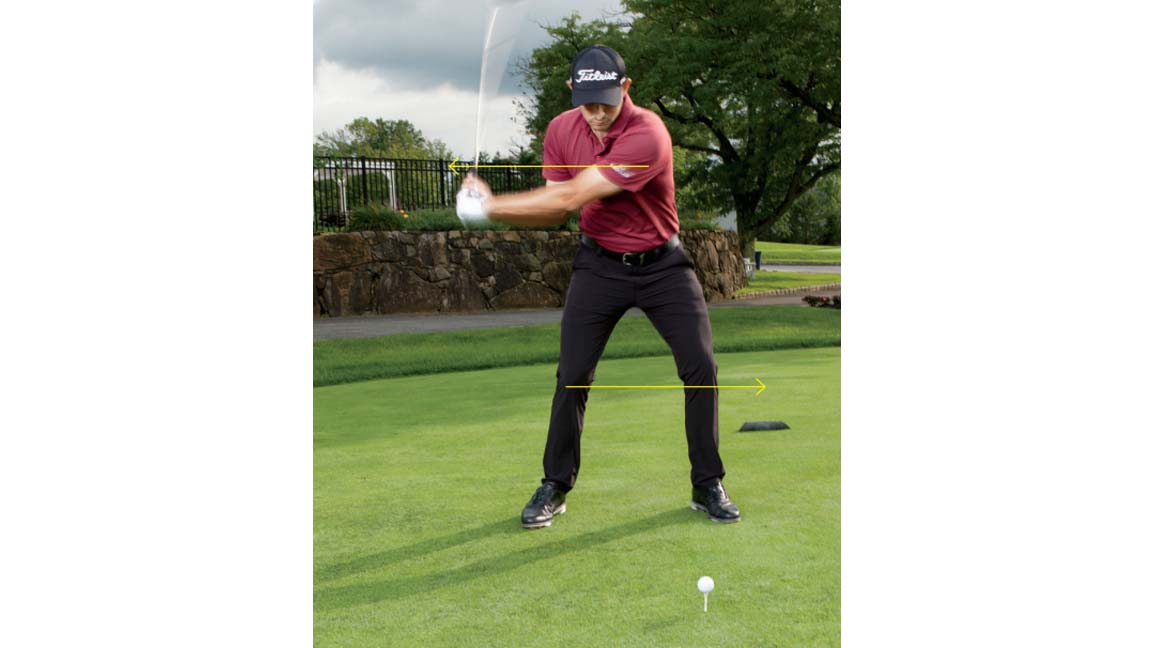
4. Find the "power slot" in your downswing
My student, Patrick Cantlay, and I have a phrase we use when working on his transition: "The lower body turns out of the way and the upper body stays in it." In other words, once the club gets to the top of your swing, go ahead and let your legs "go" while holding back any movement of the club and your upper body. This slows your transitional pace and also puts the club in a place to slip down on plane, ensuring not only an accurate hit but a powerful one as well. —Jamie Mulligan
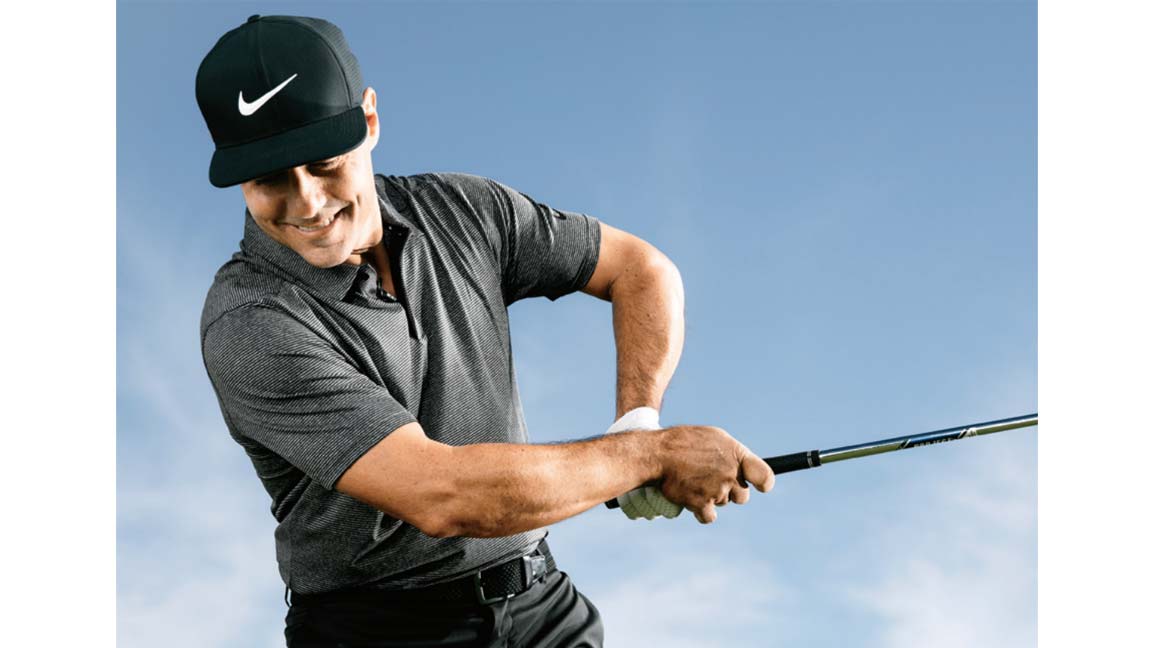
5. One key to consistency
Maintaining good arm structure throughout your swing is a major consistency key. Without it, you're toast. It's common to lose that structure by allowing your elbows to separate post-impact, or "chicken wing" (above). The fix? Wedge an object (a headcover or a softball will do) between your forearms at setup and keep it there as you swing. This will help you maintain the correct relationship between your arms and give proper shape and consistency to your swing. —Martin Chuck
6. Insta tip: "Stick" it and rip it
View this post on Instagram
| TEMPO & TRANSITION | Syncing up the arms & body . Recent lesson with a competitive junior who was having trouble getting his hand path trapped behind his body during the downswing transition. As a result there was stalling taking place through impact which means controlling the clubface rotation becomes increasingly difficult. It also makes it harder to keep the hand path on plane into the follow through. This was one of a number of different drills and stations utilized to speed up the learning curve . Head to our Insta Stories to see Hideki Matsuyama at the recent Zozo event (2nd place to Tiger Woods) going from the top of the swing to impact. Hideki is known for his deliberate tempo during transition and is also one of the best ballstrikers year in and year out @pgatour #Benderized
A post shared by Mike Bender (@mikebendergolf) on
Once you reach the top, "stick" in that position (if only for microseconds) before you begin shifting back down. It's a simple move that allows your body and arms to sync up for a powerful strike. @mikebendergolf
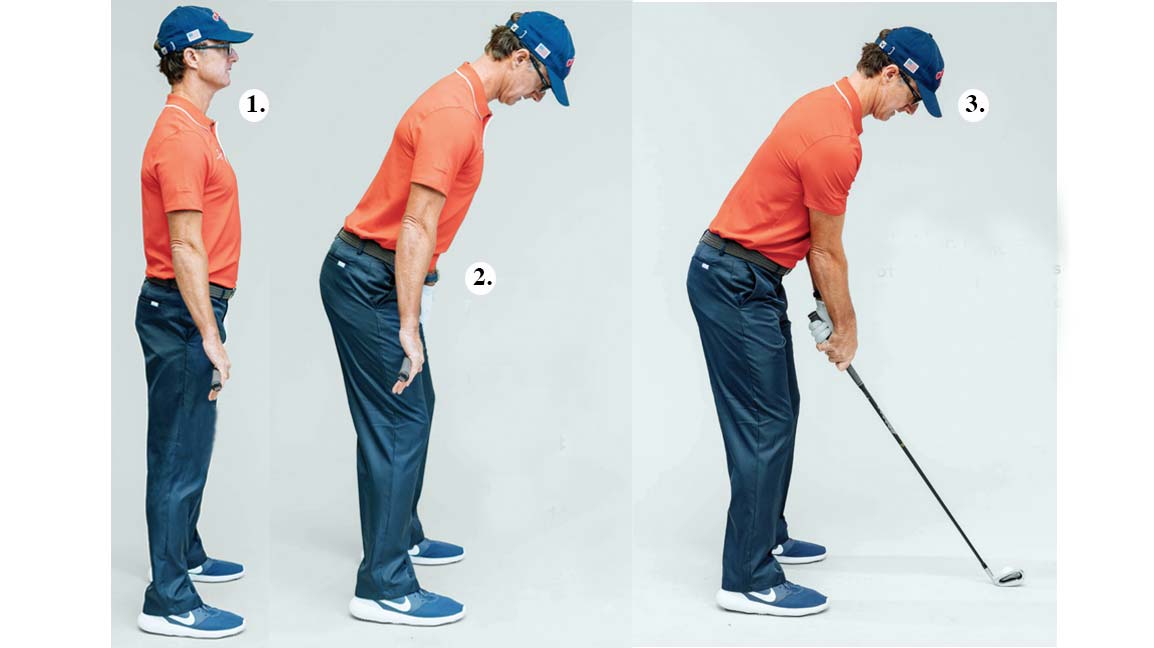
7. 3 steps to perfect posture
How you set up over the ball greatly influences how well you're able to hit it. To correctly prep your posture for action, stand with a club pressed against your thighs. Then bend forward from your hips while slightly flexing your knees. If you do this without hunching your back, your arms will hang straight down. Perfect. Now grip the handle with your glove hand and check that it's at roughly a 45-degree angle to your forearm. Once you've taken hold with your gloved hand, add the other. Congrats! You're in perfect setup posture. —Sean Hogan
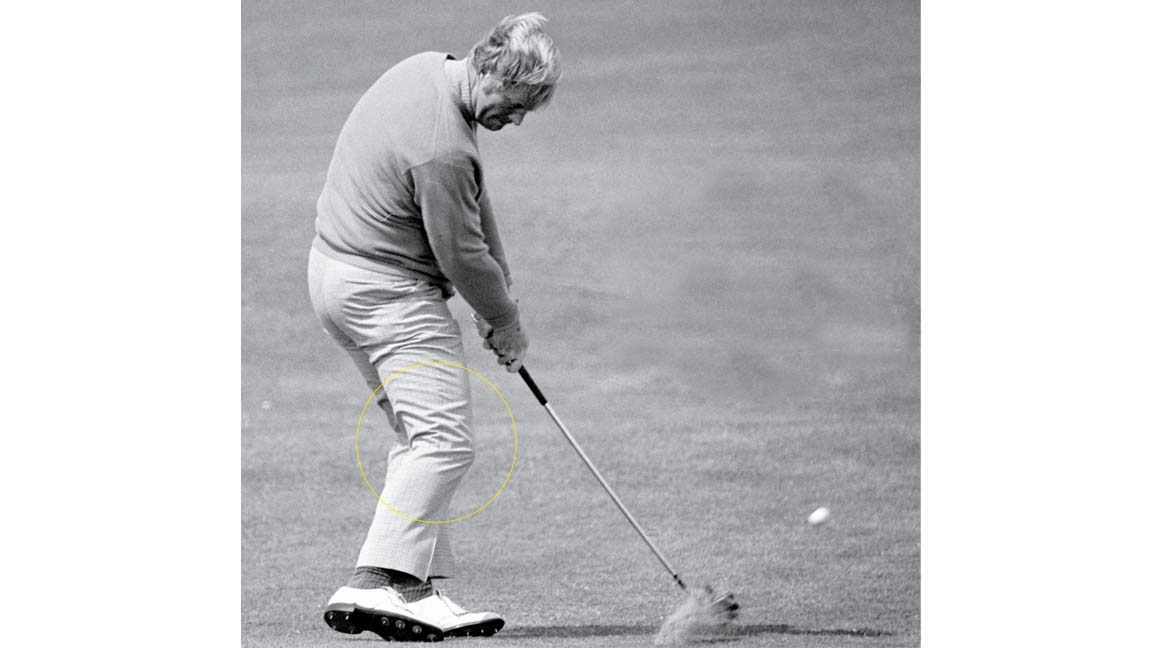
8. Drive your knee toward the target
Jack Nicklaus' footwork was incredible. All golfers should take note. See all the spikes under his trail foot? That implies a big pressure shift toward his front side. Jack is moving a ton of force toward the target. Even his front foot is coming off the ground — another sign of just how hard he's driving his trail knee forward through the shot. It's the ultimate power move, and the secret to a driving ball flight. —Joe Plecker
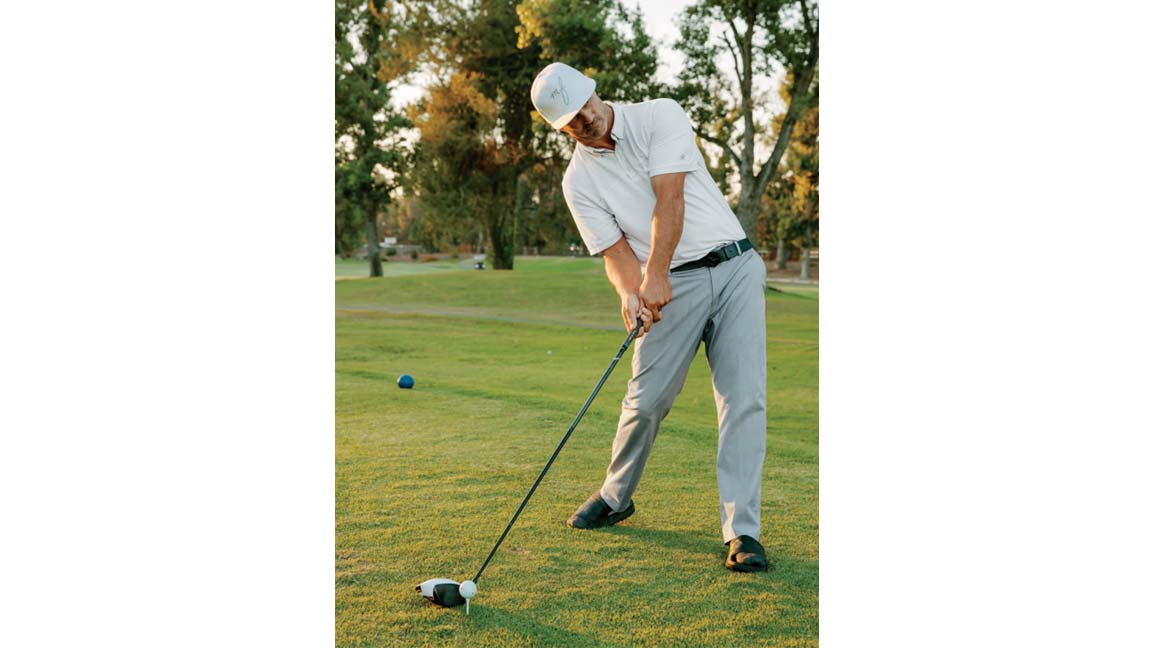
9. Torque and turn
Need a power boost? From the top, move your left side low and around your body, letting your knees separate in the process. Even better, feel like you're squatting. Pushing into a squat and pulling out of the ground like this helps clear your entire body and generates more speed. The ball won't know what hit it. —George Gankas
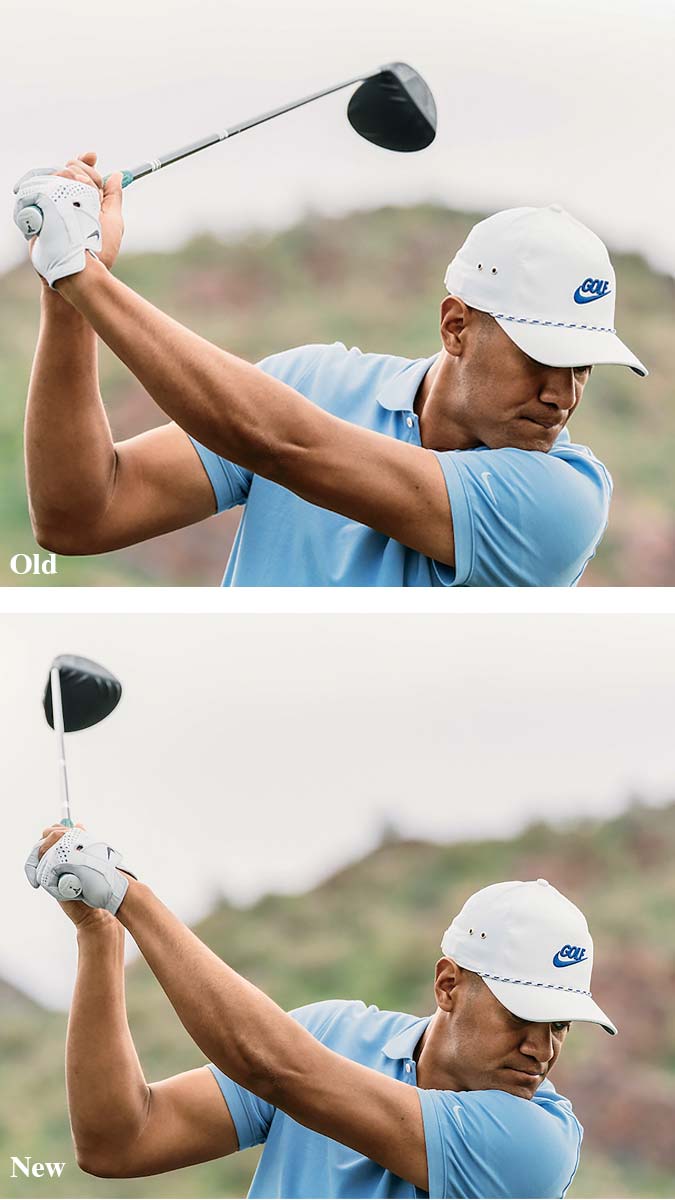
10. The Finau slice fix
When I first came up on Tour, I often played a 40-yard slice. I didn't have a choice — I played what I had. The culprit? A weak grip, which caused me to roll the club on the takeaway, leaving the face wide open at the top. With my coach Boyd Summerhays, I worked on getting the face more square at the top by keeping my left wrist more flexed and less cupped. It turned my big slice into a baby fade. —Tony Finau
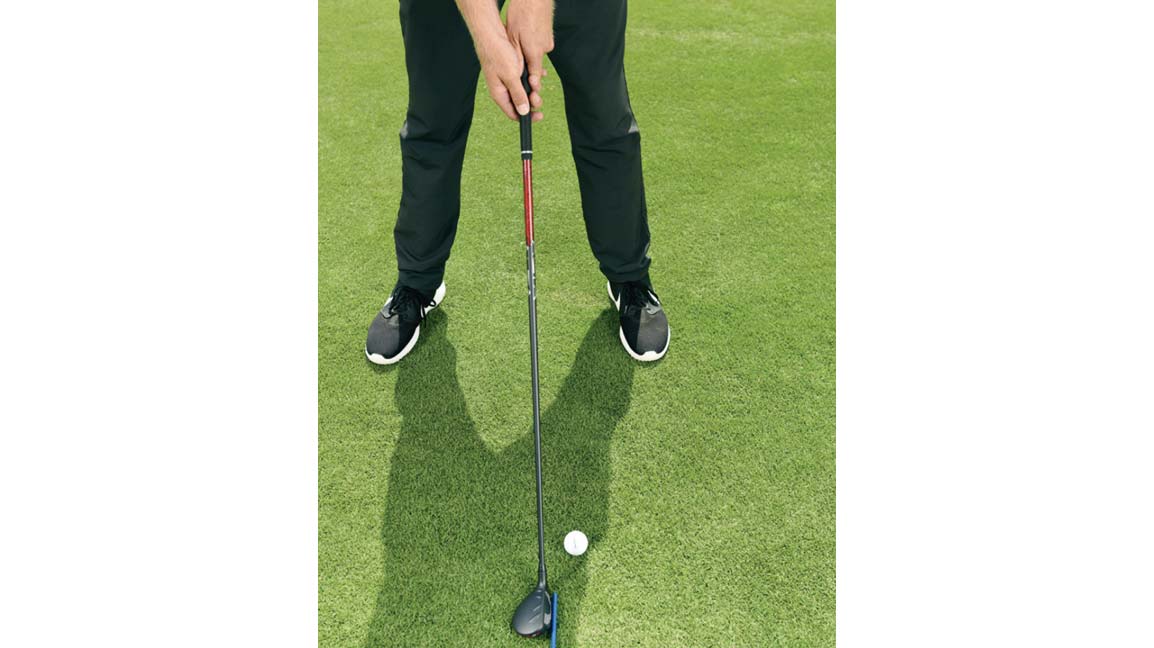
11. Get square at the start
Often, shots go wayward because of a misaligned clubface at address. Place an alignment stick just outside the golf ball, so it creates a 90-degree angle with the target line (photo, above). As you set up, align the leading edge of the club with the stick, then pull it back to its regular position. It's a simple way to ensure that the face is square every time. —Mark Durland
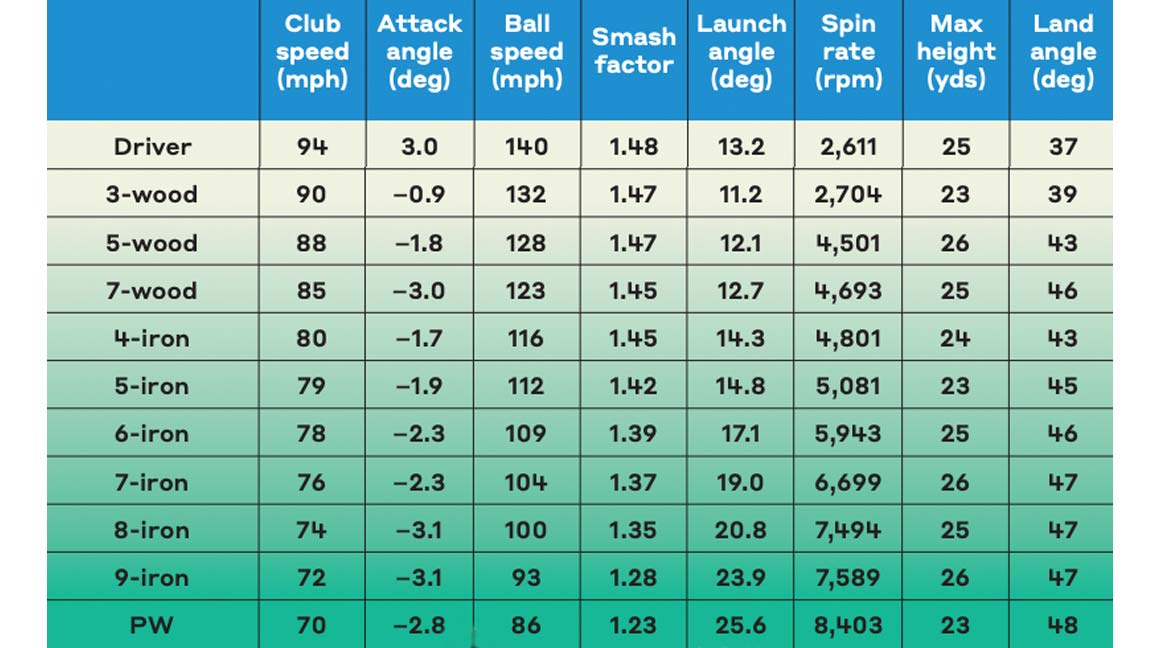
12. Optimal distance? Learn from the ladies.
Fact: Most weekend golfers' swing speeds align more with those of LPGA Tour players than PGA Tour players. Spend a little more time studying the ladies' Trackman data. Above is optimal launch for every club in the bag. Match these and you have a better chance at maxing out distance.
Data source: Trackman
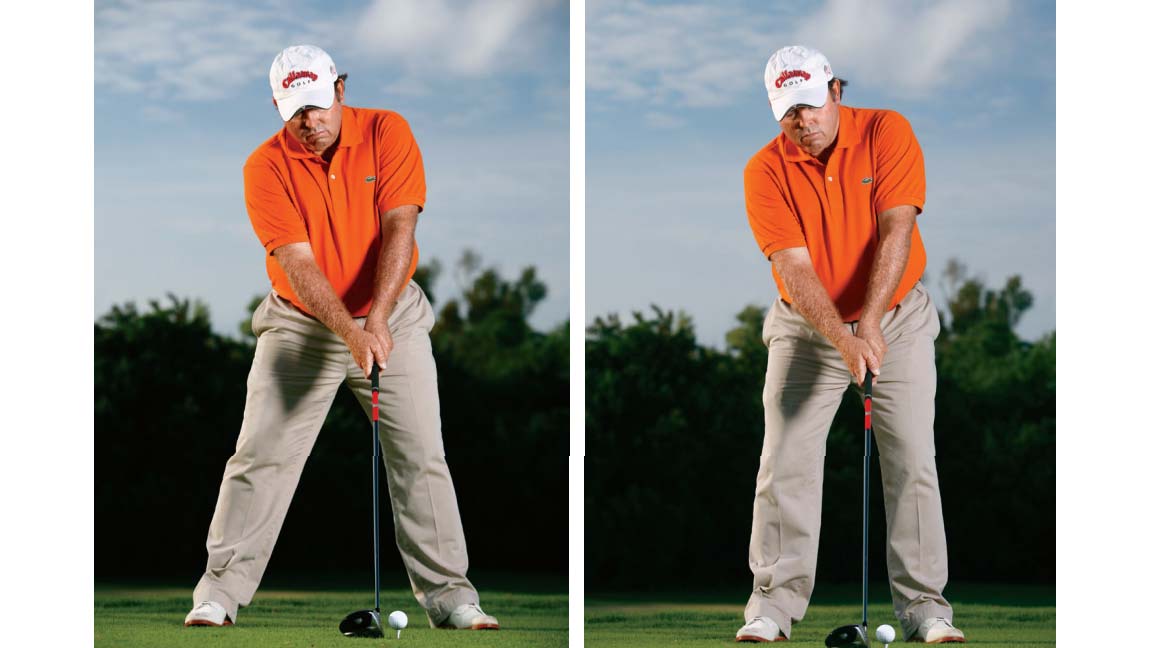
13. How to find your perfect stance width
There's no universal stance; it all depends on your body dynamics. The wider you stand, the more likely you are to shift your weight onto your trail leg during your backswing—what I call a "rear-poster." The narrower you stand, the more likely you'll keep your weight over your front leg — a "frontposter." Your ideal stance width? Take a normal walking stride, stop after one step and pivot into a golf stance. There it is. Adjust your weight shift accordingly. —Mike Adams

14. Two-second takeaway check
Something I always work on is keeping the clubhead in front of my hands on the takeaway. If it gets too inside, my swing goes kaput. I'll hit big blocks or hooks. That's why my dad, who's also my coach, helped me develop a preswing backswing checkpoint. It's pretty simple: Get into your address position, then start the club back. Stop when the club shaft reaches parallel to the ground. Look back and check that the clubhead is in line with your hands. Think of it as your own personal waggle. It'll help keep your swing right where you want it. —Justin Thomas
15. Insta tip: Check your putter path
View this post on Instagram
Thanks for @golf_com and my man @rorfugaz for all the hard work. #Repost @golf_com with @get_repost ・・・ If being stuck inside has you staring at the walls, grab your putter and use them to improve your putting path. ⛳️
A post shared by Michael Hunt (@michaelhuntgolf) on
Line up your putter just inside a baseboard. Make your stroke. If you hit the board, there's something wrong with your path. The goal: Miss the board by using a straight or arcing stroke. @michaelhuntgolf
16. Pay more attention to distance than direction
I mean it: It's better to miss left or right than too long or too short. If you keep the focus on speed, you'll start to develop a consistent roll. And with consistency, you'll draw better lines to the target. Your focus will skyrocket, and so will your confidence. —Jason Day

17. Play like a kid
Improving your technique is important, but don't go overboard. Find something that works for you, and once you've done that, follow Jordan Spieth's advice: "The most valuable advice of all is to 'play like a kid.' Just freewheel it and have fun. I tell myself to just keep my head down and focus on why I love this game."

18. Know your shot shape and visualize it
When it comes to hitting it long off the tee, I always go with my normal shot shape. When I'm driving the ball well, I play a slight draw, so no matter what the conditions I'll always stick with that natural shape. When I veer off from that mindset, I start missing it both ways and we know how the two-way miss can cripple even the best drivers in the world. I'll pick a small target where I'd like my ball to end up and try to visualize my shot shape — seeing a slight draw — and go with it.
I think getting off the tee is the hardest part of the game for recreational golfers. I've seen many weekenders fight their natural shot shape. I have a friend whose ball flight is a big cut. He aims down the middle of the fairway every time and he'll drive the ball into the right rough or woods. I finally said to him, "Why don't you just play the cut? Aim up the left side of the fairway and hit your normal shot." He started doing that and immediately was hitting more fairways.
Know your shape. Then visualize it and own it. Easy. —Cam Champ
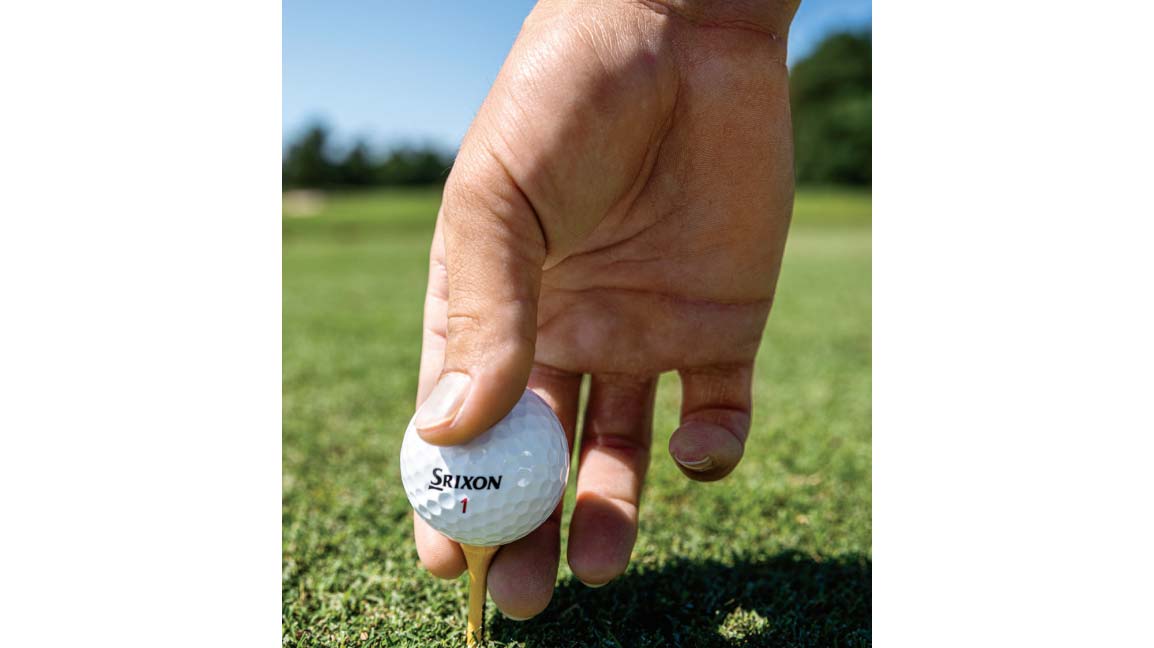
19. Tee the ball at the correct height
We've all heard the saying "Tee it high and let it fly," but for me teeing my ball lower is a key to finding more fairways. Ninety percent of the time I peg it about an inch and a half above the ground. The low ball flight is much more consistent for me and because the ball isn't in the air as long, it has less time to move.
Sure, the ball would fly farther if I teed it up higher, but I've found that my total distance is the same because I get so much roll – out. I'll tee it half a ball higher if I have a drivable par 4 and I want to carry it farther and land it with less roll, but most of the time I tee it low and see it roll. Recreational golfers looking to find more fairways should try teeing it lower. I bet they'll actually gain more distance off the tee.
"Cameron could easily fly the ball 340 yards, but he'd lose accuracy," says his instructor Sean Foley. "Instead he carries the ball 310 yards and then gets 40 yards of rollout because his landing angle is 20 degrees." —Cam Champ
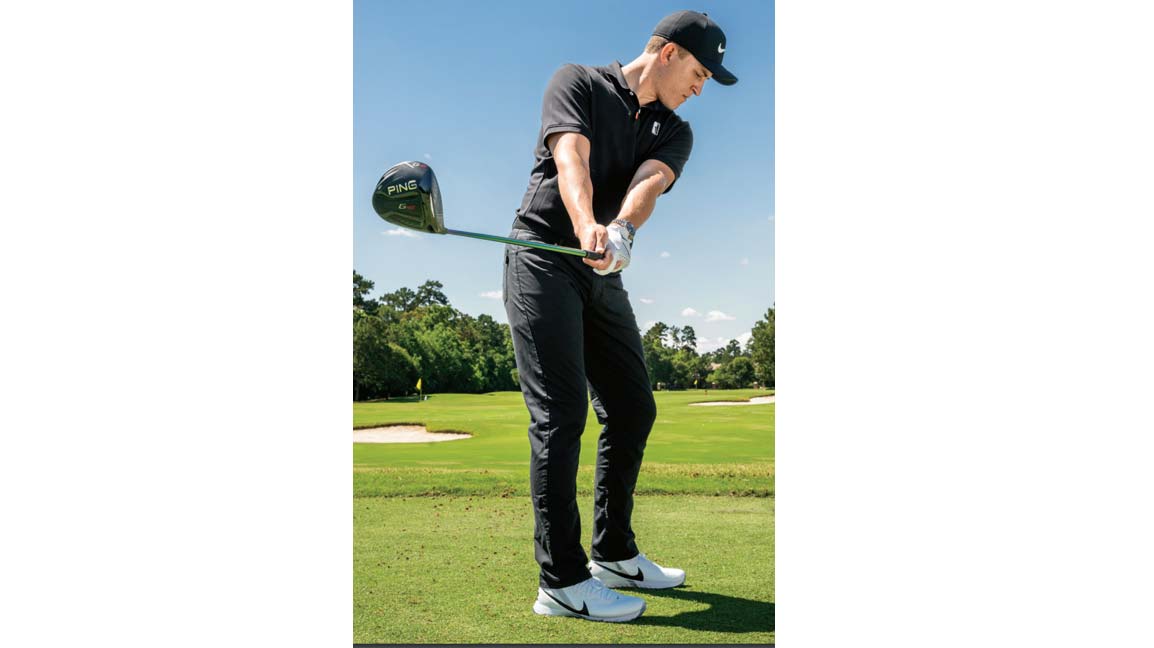
20. Get wide early for speed where it counts
Speed starts at the beginning of your swing. Whether you can whip it 80 miles per hour or 120-plus like me, the key to generating ball speed is creating width in your takeaway. I see a ton of recreational golfers who struggle to create a full turn or rotation. That problem starts during the takeaway. Many golfers just pick up their driver and turn their shoulders. In order to create maximum speed, you have to create maximum width. This is something I work on a lot.
Try taking the club back almost as far out as you can, creating that width. Naturally, your body will want to turn with you. This will create more speed when you come down from the top. —Cam Champ

21. Rotate everything at the top
I've played in dozens of pro-ams over my career and one common mistake I see amateurs make is that they forget about their lower body. They'll make a big turn with their upper body but keep their lower body still. I like to make a complete body turn. I know all golfers may not be as flexible as I am, but even the most inflexible player can make a turn to some extent. Use your hips, legs and shoulders. Make a full turn, or as full as you can, before starting your downswing. —Cam Champ
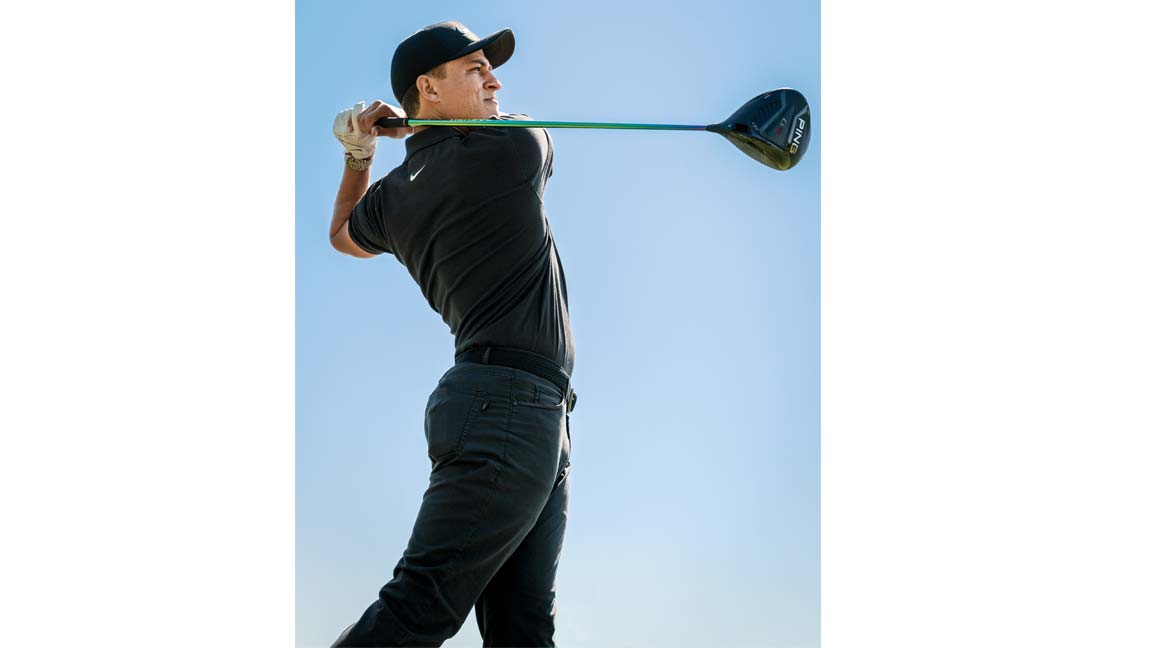
22. Get your hips out of the way
Equally as important as the rotation to the top is a full rotation from the top on down. This is done with our hips. Almost all long hitters fully "clear" their hips on the downswing, and do it so aggressively that the club ends up "lagging" behind their body. Sergio García has been the poster boy for this move for years. Other examples: Rory McIlory and Brooks Koepka … their hips are rotating superfast and the club is behind them. Tip: Once you get to the top of your swing and you're ready to start back down, feel like you're rotating your hips as hard as you can. That will create the lag. Lag creates speed, and speed creates power.
"Cameron uses the principle of elastic energy to create his speed," says Foley. "He basically turns into a slingshot by rotating his lower body. The elastic recoil is where his true power comes from." —Cam Champ
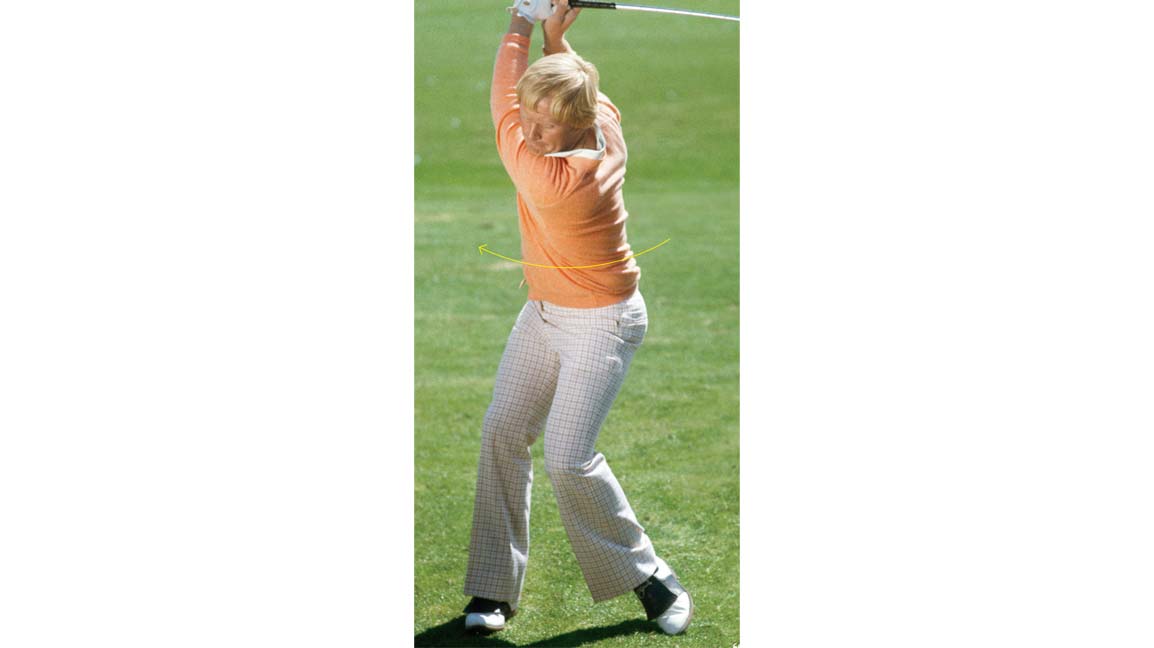
23. "Load" your right side for power
If you're curious how Jack Nicklaus became the most dominant driver of his generation, this is it! He has rotated deep around his right hip and loaded max pressure into his trail side for a huge turn. (His left foot is mostly for balance.) It's a full-body, athletic windup that ends up positioning his entire body behind the ball as he reaches the top. Lesson: Don't cheat your backswing. The wider and fuller you make it, the faster you'll swing.
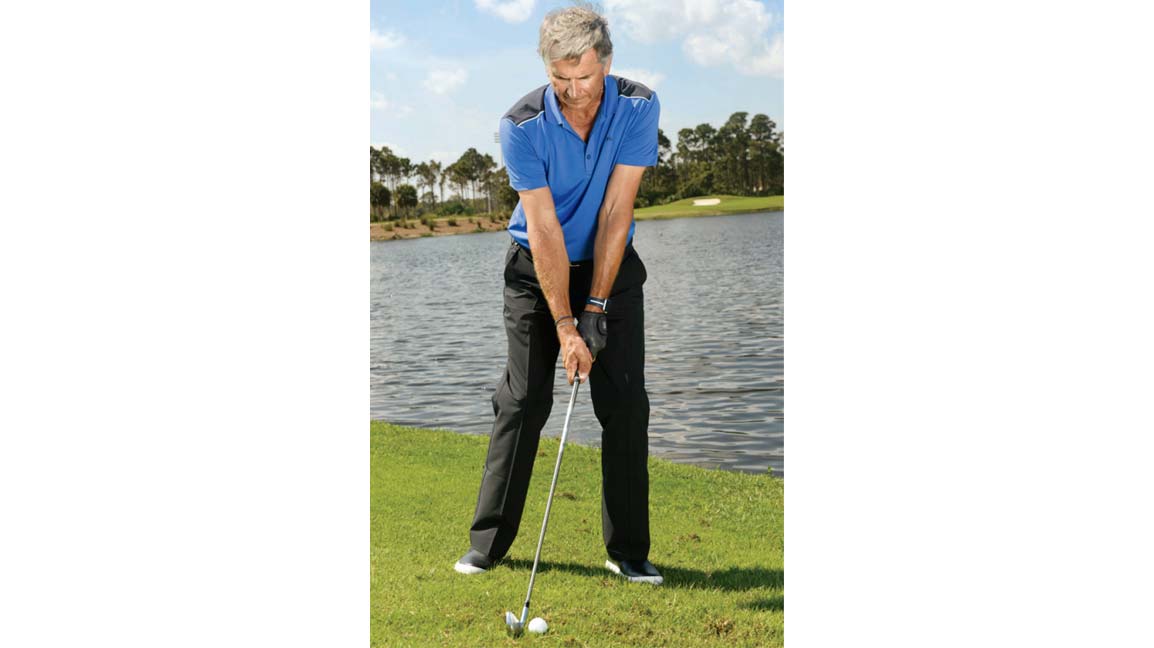
24. Smoke it on a downhill
Downhill lies can be tough, but making a few adjustments gives you a greater chance for success. One constant for downhill lies is that they tend to produce shots that come out low and to the right, so you need to make four adjustments: 1) go up one club; 2) aim left; 3) move the ball back in your stance and set your shoulders at the same angle as the slope; 4) stay balanced and centered throughout the shot. Avoid any inclination to "lift" the ball up. Stay in the shot, swinging down with the slope of the hill you're standing on, and use the lower ball flight to your advantage. —Michael Hunt
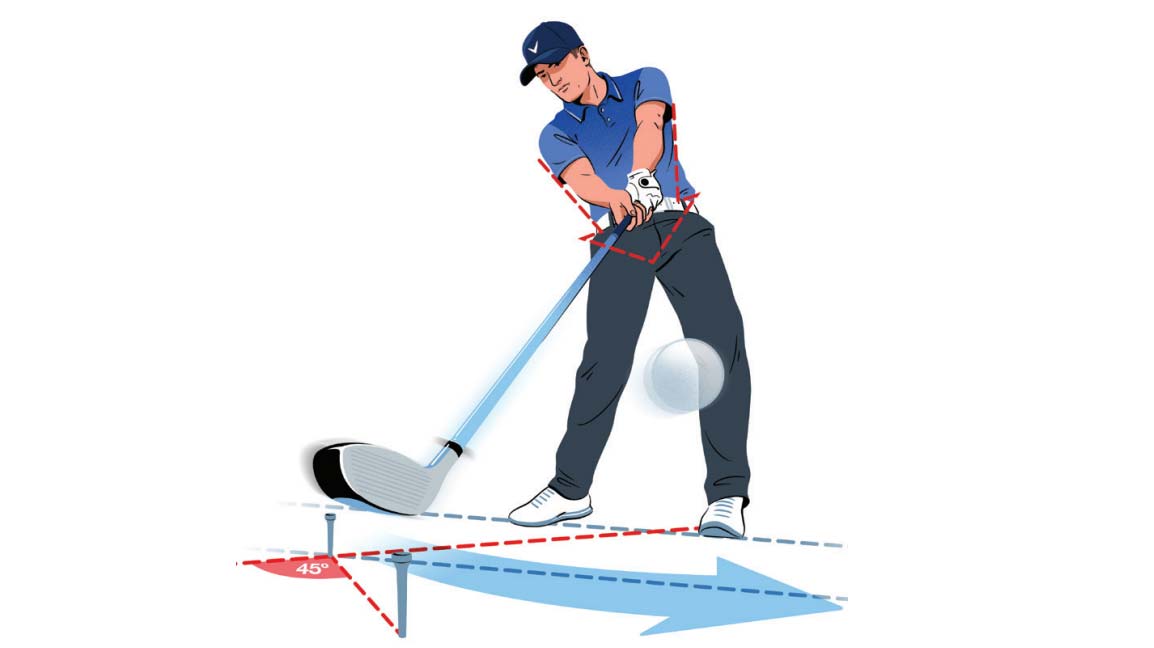
25. One drill for better driving
Distance is king, but distance and accuracy is the ultimate goal. To master both, you need to extend your arms fully through impact. Try this: Tee up a ball and place another tee six inches outside the first on a 45-degree angle. Your goal is to strike the ball on the first tee and swing the clubhead over the second. Do this and you'll automatically hit all the right power positions.
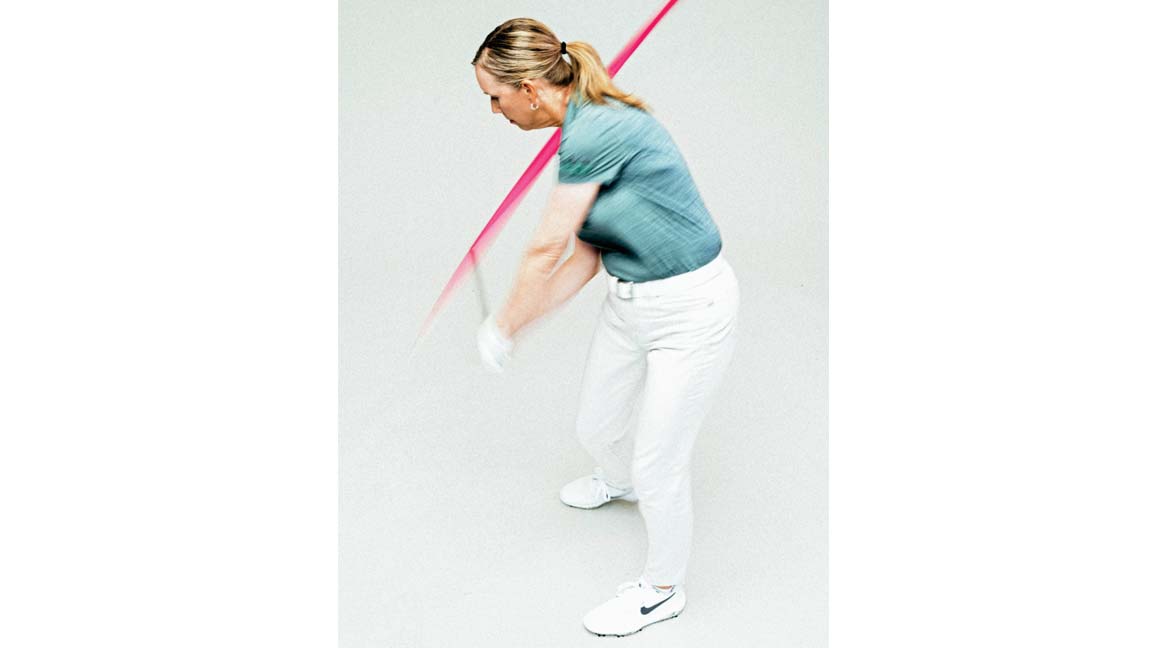
26. Whip up more speed
Imagine there's a whip connected at the clubhead. To get the whip to crack at the bottom of your swing, you must "snap" your wrists and hands through the strike without overswinging your shoulders. Here, I've attached a piece of ribbon to the shaft . (It's a lot safer than an actual whip.) The trick is to consciously get the end of the ribbon to "crack " right at the bottom of your swing arc. This drill is a great way to take your mind off hitting balls, and instead hone in on increasing your clubhead speed. —Cheryl Anderson
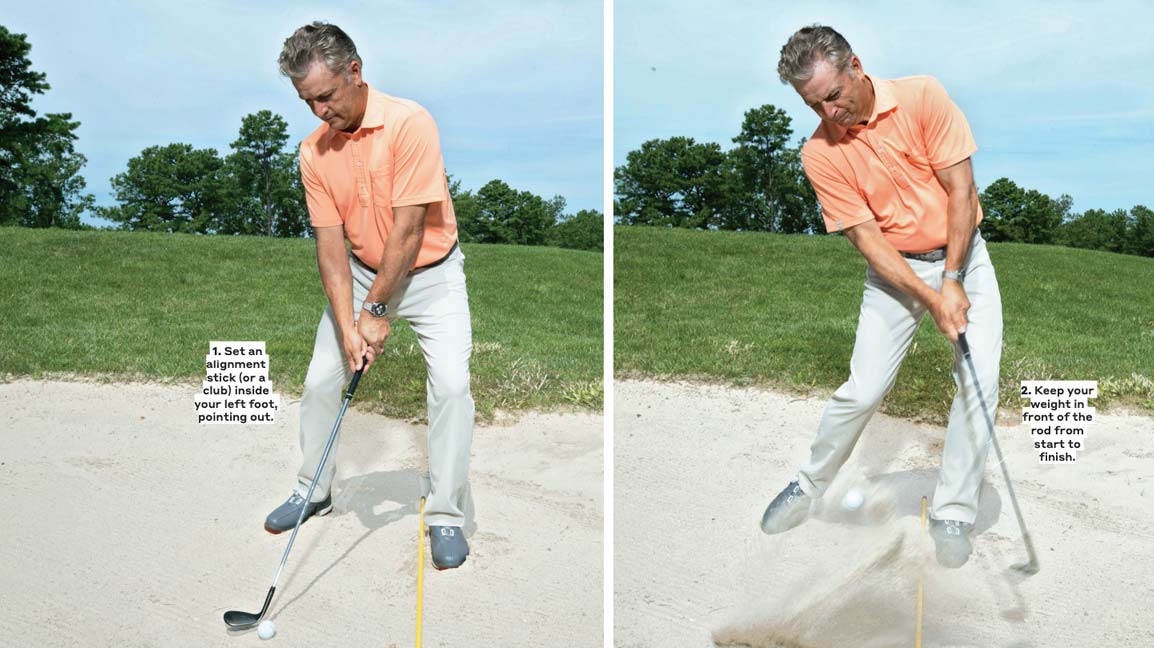
27. Secret to soft bunker shots
When you're faced with a short bunker shot and need the ball to land softly, you need to adjust your stance. At practice, place a club or an alignment stick just inside your lead heel. Take your stance and open the clubface. When you make your swing, be cognizant of the stick beneath you, and make sure to keep your weight in front of the stick (i.e., over your left side) from start to finish. Naturally, it'll help you create the proper descending blow into the sand for high, soft shots. —Bernie Najar
28. Insta tip: Stabilize your stroke
View this post on Instagram
A post shared by Jason Baile, PGA (@jasonbailepga) on
Wrap a resistance band around your knees and tuck sticks under your arms so they form an "X." Keep the sticks in place by rocking your shoulders and use the bands to "quiet" your lower body. Perfect. @jasonbailepga

29. Always hit the sweet spot
You don't need to swing fast to hit the ball far, but you do need to hit it in the center of the face. Try this: Get a can of foot spray or suntan lotion and coat the clubface. Hit balls, focusing only on making centered contact, and take note of where your misses are. You'll get a better understanding of your impact patterns and how you should adjust. —Tina Tombs
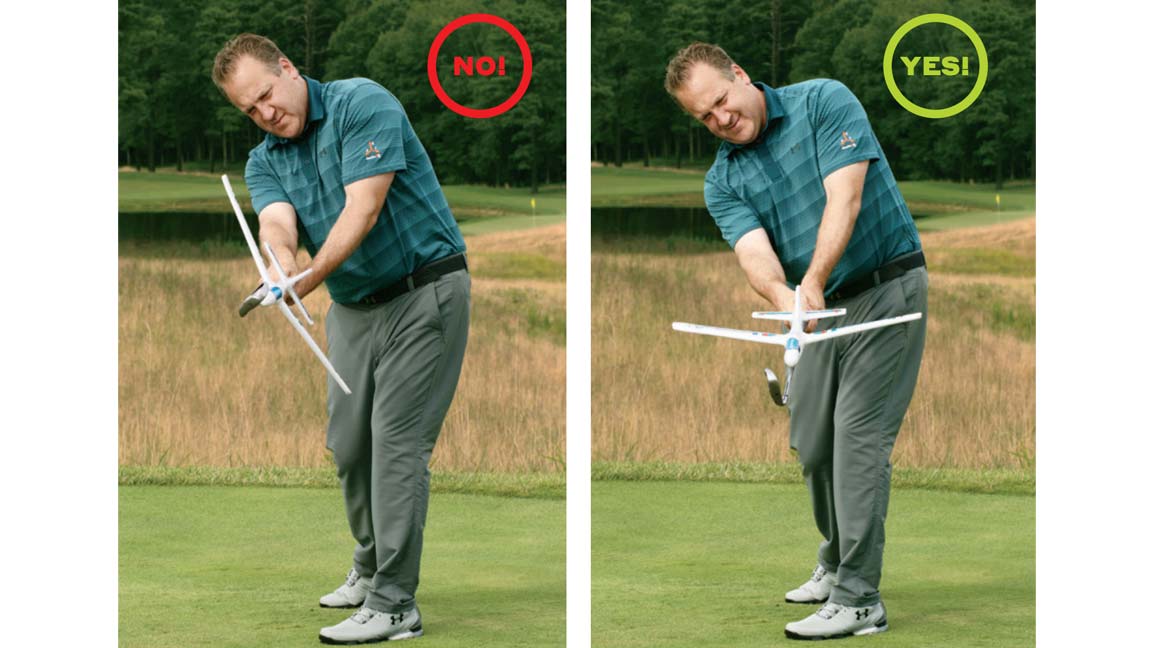
30. A cue for pure impact
Picture a plane on top of the shaft as shown here. If you pull the club too much to the inside through impact or under/ over-rotate the clubhead, you'll crashland the plane (above left). Work on getting the toe of the clubhead to point up post-impact, with your arms and hands extended (right). See the plane landing safely and you'll find yourself in a better position through the hitting zone. —Michael Jacobs
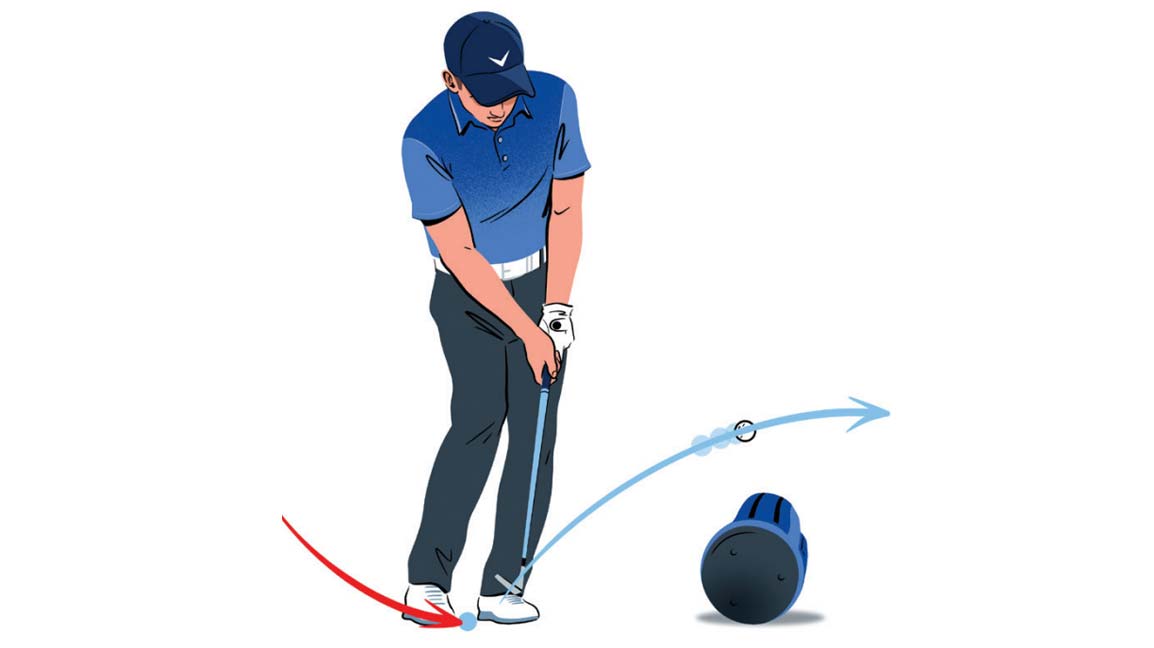
31. Stop chips on a dime
The best training aid to help you generate more spin on your chip shots? It's your golf bag. Lay it on the ground two feet in front of the ball and across your target line. Hit chips over the bag using your sand wedge. The bag's proximity to the ball will force you to hit down on the ball sharply and with lots of acceleration — two keys for creating max short-game spin.

32. Get in touch with your most damaging swing fault
Although no two golfers are the same, you can use handicap data to spot trends on what you should be working on most when you practice. Beginners and high-handicappers tend to have problems with the grip. A majority of 90s shooters struggle with loading their backswing (see tip No. 34), while lower handicaps typically need help with their body sequencing on the downswing.
Source: Swing Index
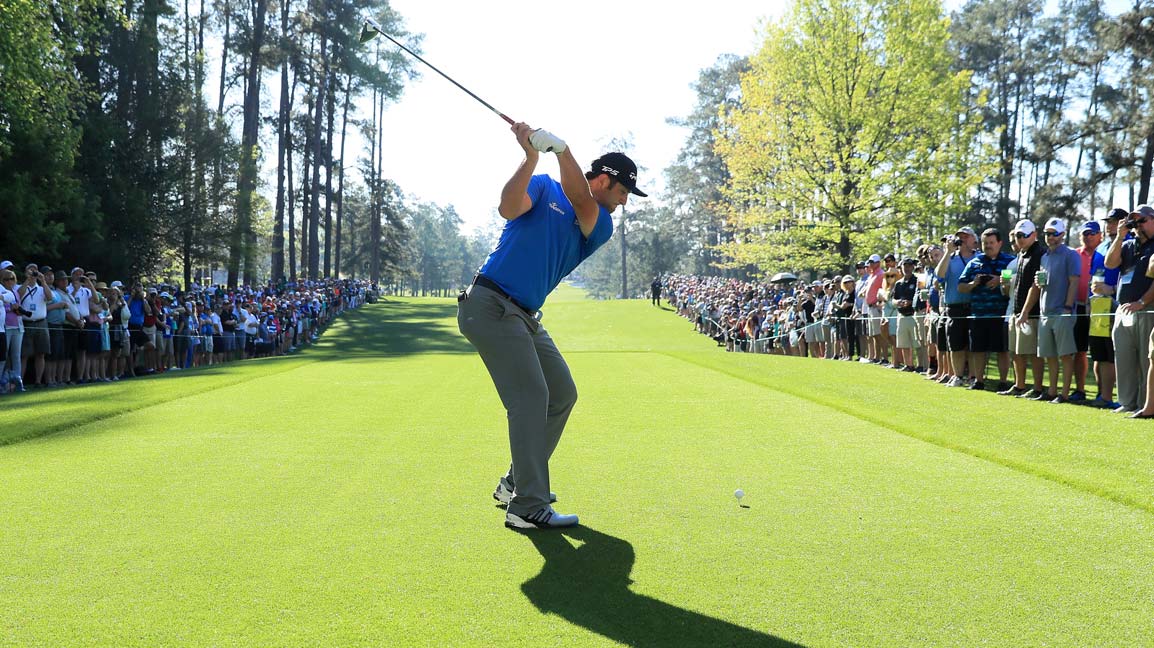
33. Go with what your body gives you
If you have limited flexibility, your best bet is to keep your swing in check. Jon Rahm does this beautifully: He keeps his backswing short (yet wide), sets his lead wrist early and keeps his arms in front of him throughout. If he made a longer backswing, he'd come out of his posture and lose his body angles. Rahm may not be the most flexible player on Tour, but he's learned to max out what he has—a great lesson for all golfers. —Dave Phillips
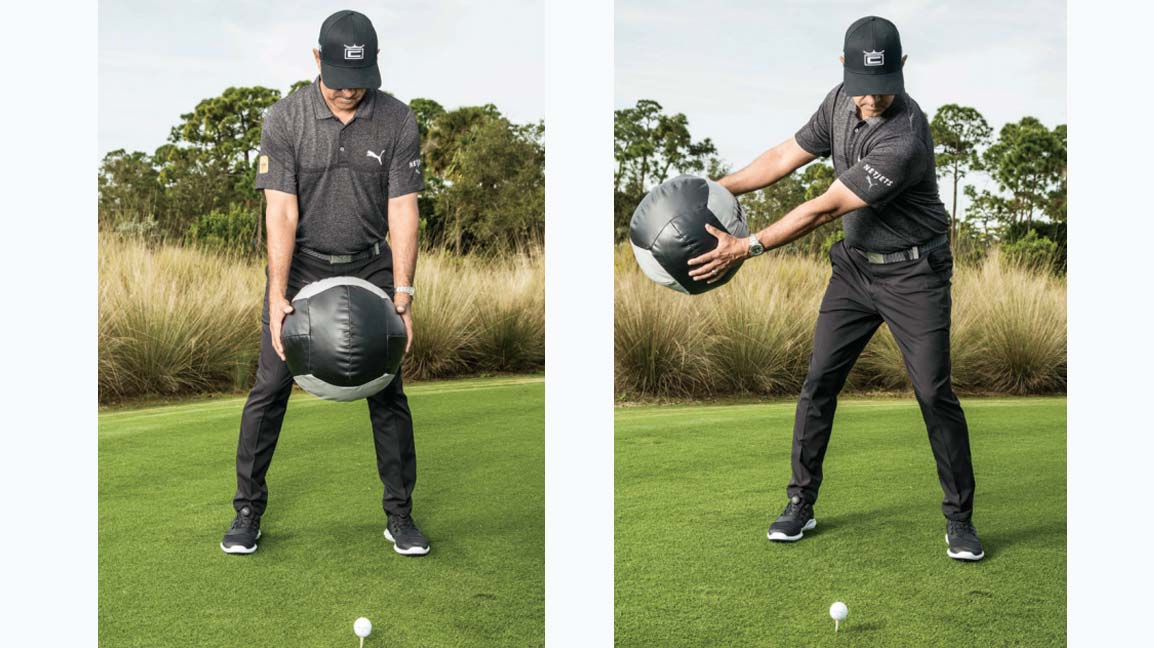
34. Practice a power coil
From the top, most golfers are looking to "fire the gun." Unfortunately, they haven't even loaded it yet. Loading happens before you reach the top, and you have to turn to load. To get it right, hold a medicine ball in front of you while in your golf stance. Swing the ball halfway back, feeling your right hip load and your lead shoulder turning under your chin. Hold this coil for a few seconds, then release. Bring the same feels to the course and you'll pound it. —Claude Harmon III

35. Nail the 40-yard bunker shot
The 40- to 60-yard bunker shot is notoriously difficult and feared. A slightly mistimed shot can produce fat or thin contact in a heartbeat. Plus it's difficult to gauge the distance. I started fiddling around with this shot and came up with a method that's extremely reliable and allows you to judge spin and distance easily via a perfect strike. The setup is the key. Take an ultra-wide stance, to keep your body from swaying. Position about 60 percent of your weight over your front foot, to encourage a downward angle of attack. Lastly, choke up on the handle and lock your arms together tightly. This will sync your arms to your torso and eliminate unwanted wrist hinge. This setup naturally produces a wide, U-shaped swing and will help the club to smoothly skid through the sand. Power your swing using hip and torso rotation—your arms are just there for the ride. Sounds radical, but it works like a charm. —Jonathan Yarwood
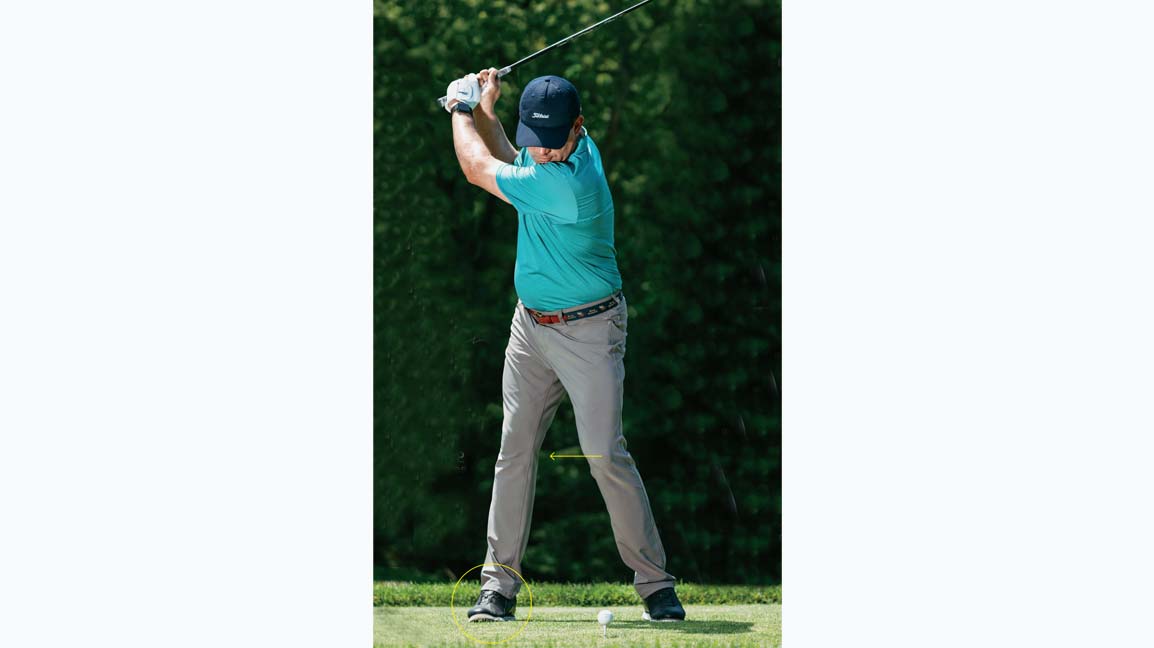
36. The secret to a power shoulder turn
If you're like a lot of amateurs, you tend to slap at your drive with your hands and arms, instead of using the big muscles of your upper body. The result is a power-sapping slice. More shoulder turn is what you're after, and that's something you can get with a few small tweaks. At address, draw your right foot (if you're a righty) two to three inches back, perpendicular to your target line, while flaring the toes of that same foot slightly outward. This will allow your hips to turn more freely, which will help your shoulders turn more freely, too. In your backswing, let your left knee move laterally toward your right knee. You can even let your left heel come off the ground. Taken together, these modest changes will help your left shoulder move farther behind the ball — just the coil you need for longer, straighter drives. —Kevin Sprecher
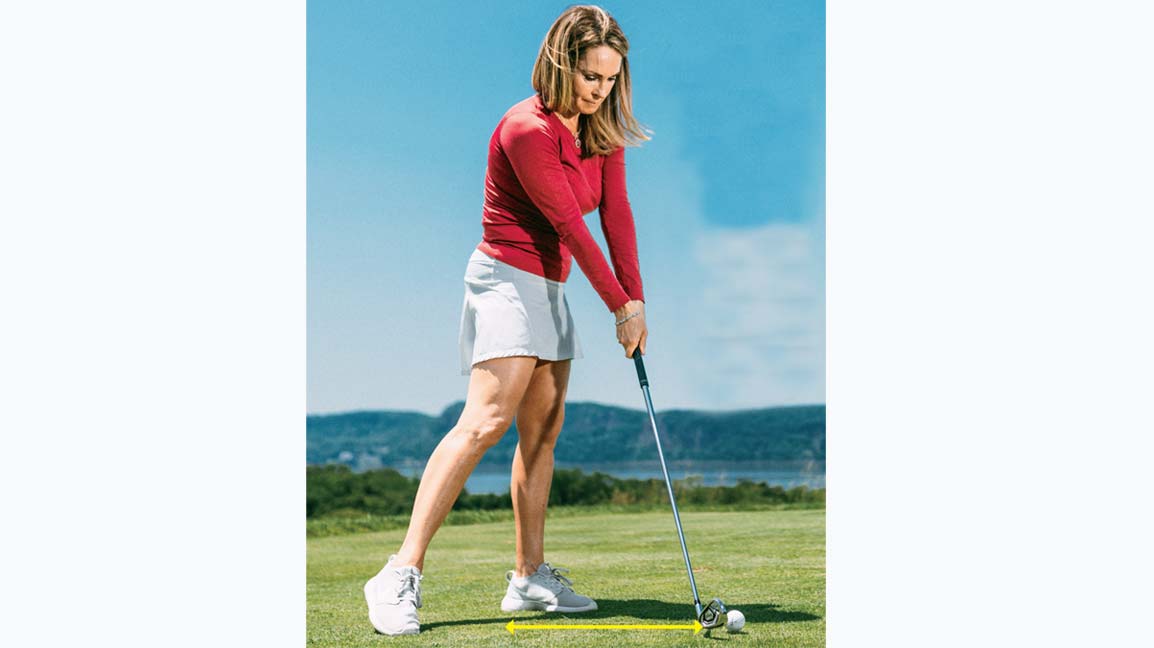
37. Step up to knock your approach shots closer
It's hard to hit your irons near the flag if you're standing too far from the ball. But that's what a lot of amateurs do. They're reaching at address, badly off balance, with little chance of catching it flush. To set up properly, hold the club with your arms hanging straight down and the ball so close to you that you feel crowded. Then step back slowly in small increments, just until you have enough room to swing. You should feel evenly balanced heel to toe. Your weight should also be distributed 60-40 between your front and back leg to help you stay more centered during your swing. Now you're ready to catch it pure. —Debbie Doniger
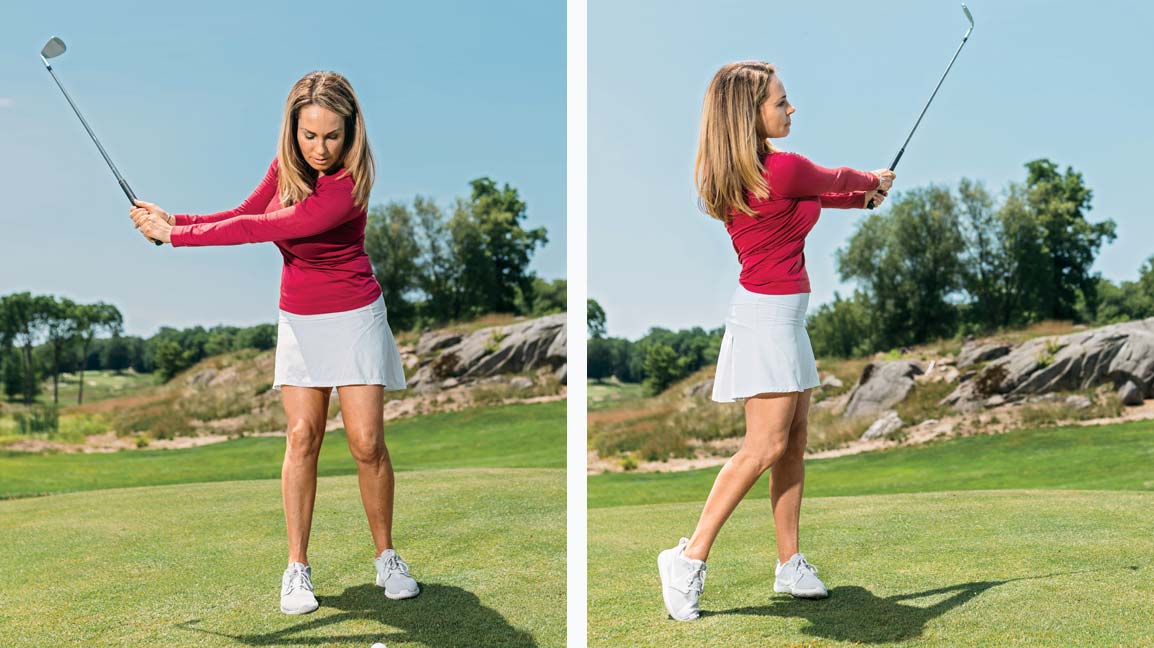
38. Make a full rotation to pure your short shots
From 60 yards and in, you may be hitting a half wedge. But you shouldn't be hitting it half-heartedly. On these shots, a lot of amateurs grip the club too loosely and flip at the ball with their wrists. It's an erratic technique that allows the clubface to twist unpredictably at impact— all the more so on shots played from the rough. Though you don't need a stranglehold on the club, a slightly firmer grip will create more consistent con – tact. You should be holding the club securely enough that no one could pull it easily from your hands. Similarly, keep your wrists firm on your takeaway, rather than breaking them quickly, and turn your chest and shoulders with your arms. It's a short shot, but you still need to rotate through it, finishing with your belt buckle pointing toward the target and your arms extended in a mirror of your backswing. —Debbie Doniger
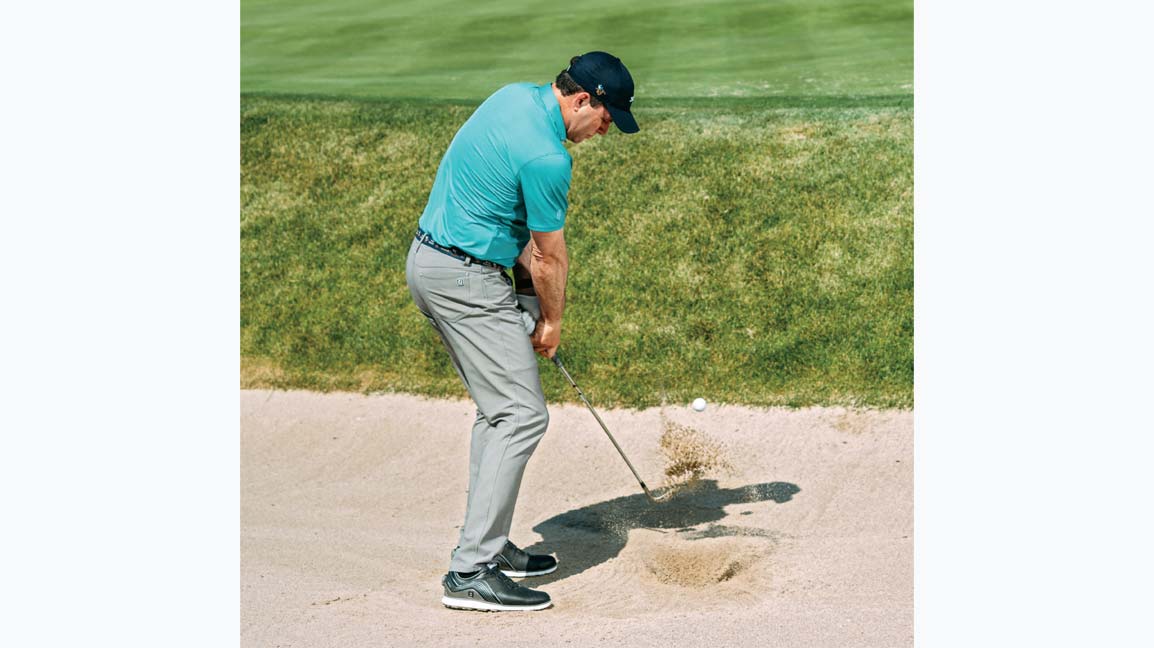
39. Square up your stance from the bunker
Tour pros make it look so easy. But the way they play their sand shots, with the ball far forward and the clubface wide open, requires more clubhead speed than most amateurs can muster. Make it easier on yourself by setting up with your shoulders and clubface square, and the ball slightly forward of center. From here, you'll need to dig the blade into the sand to gouge the ball out, as if you're playing from a buried lie. You'll be less likely to blade it or catch it heavy, and — most important — you'll be on the green. —Kevin Sprecher
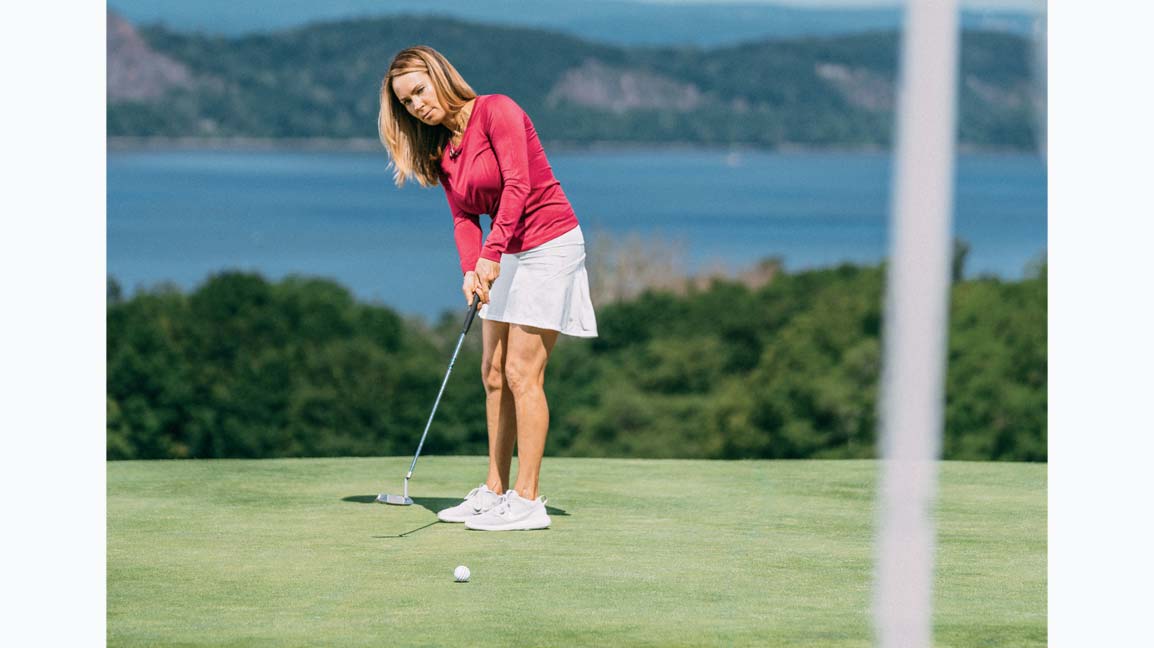
40. Focus on the hole when you're putting
When it comes to putting, peeking is a problem. If you look up midstroke, good luck getting the right speed and line. Here's a better way to direct your gaze: Try looking at the hole the entire time. Jordan Spieth has had success with this on short putts. But the approach is great for lag putts, too. Grinding over long putts can cause ten – sion and overthinking, which makes it difficult to dial in distance. Focusing on the cup helps lessen tension in your arms and shoulders. It also frees your mind so that your instincts can take over. You're relying on feel, instead of getting bogged down in mechanics. —Debbie Doniger

41. Rotate for a better release
Hitting a powerful draw has little to do with flipping the club over through impact and everything to do with properly rotating your body. Here, I'm using a swing aid (in the yellow circle) to illustrate that my clubface has remained square to my swing path (or just slightly closed for a draw) and that it's still bisecting my forearms. And check out my body rotation — I've cleared my left side, enabling my right side to power through and hit the ball without any need to flip my hands. Both arms are fully extended too, ensuring my rotation was the driving force behind the swing. —Mike Bender
42. Insta tip: At-home pivot check
View this post on Instagram
Now that you've got time, pull up a chair and perfect your pivot 👌
A post shared by GOLF.com // GOLF Magazine (@golf_com) on
Take your stance with your butt up against a chair. Make a swing. Feel the pressure on the chair shift from both cheeks — to the right, back to both, then to the left — as you pivot back and through. @jonathanyarwood
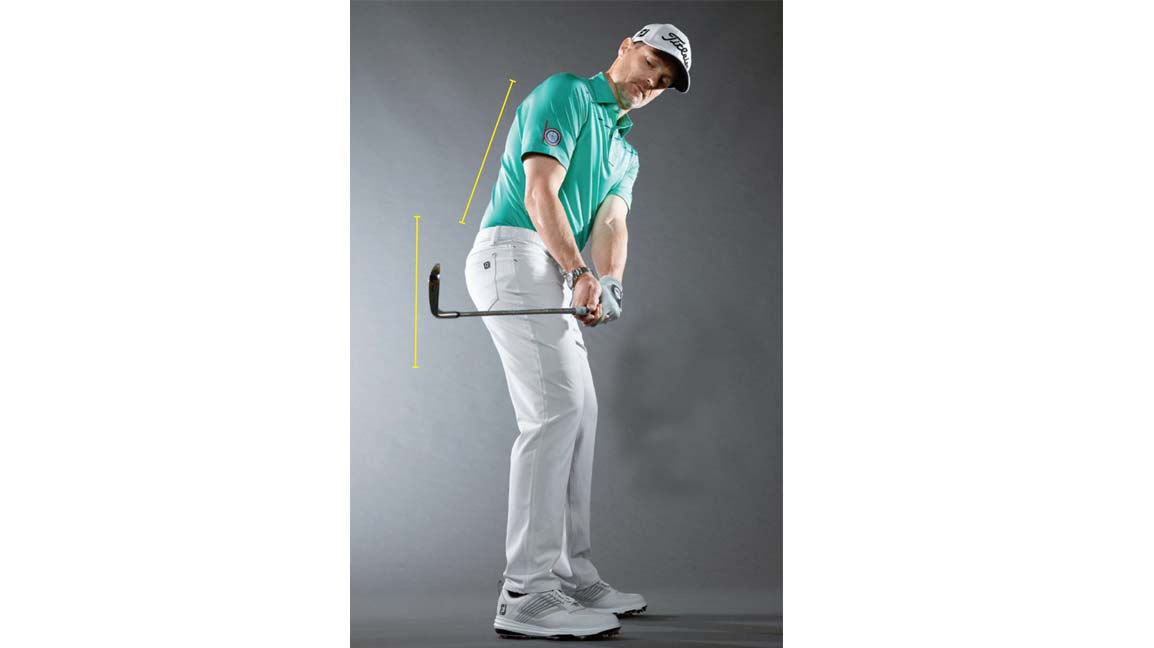
43. Groove a picture-perfect takeaway
If you struggle with accuracy and traectory control, the culprit may be over or under-rotating the face during your backswing. To get things fixed, check your backswing at the point where the shaft is parallel to the ground. From here, look and see if the toe of the clubhead is aligned with your spine. If it's in alignment, you won't have to manipulate it as much through impact. Your ball control and consistency will sky – rocket. —Mark Blackburn
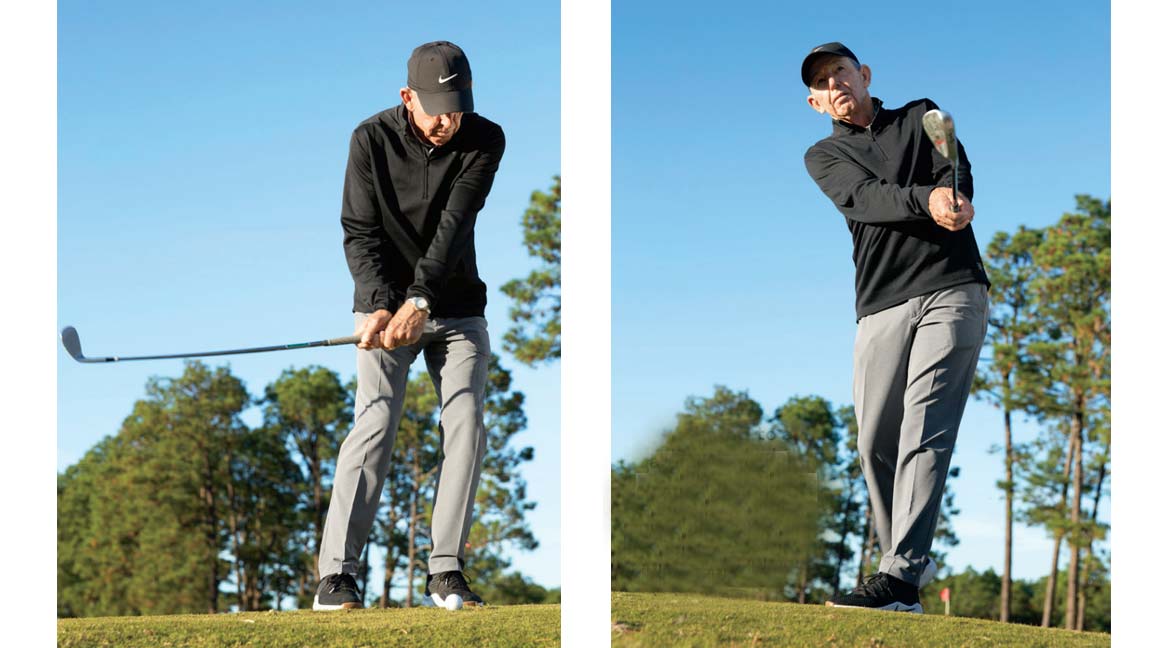
44. Punch with precision
To hit a successful punch shot around the green, you must limit overusing your hands and wrists and focus more on rotating fully through the ball. On the backswing, keep your hands in front of the clubhead and your arms in front of your chest. On the way through, simply turn into an abbreviated finish. There's no need to "snap" the clubhead or release it at the ball. It's called a punch shot, but it's anything but a "jab." —Chuck Cook
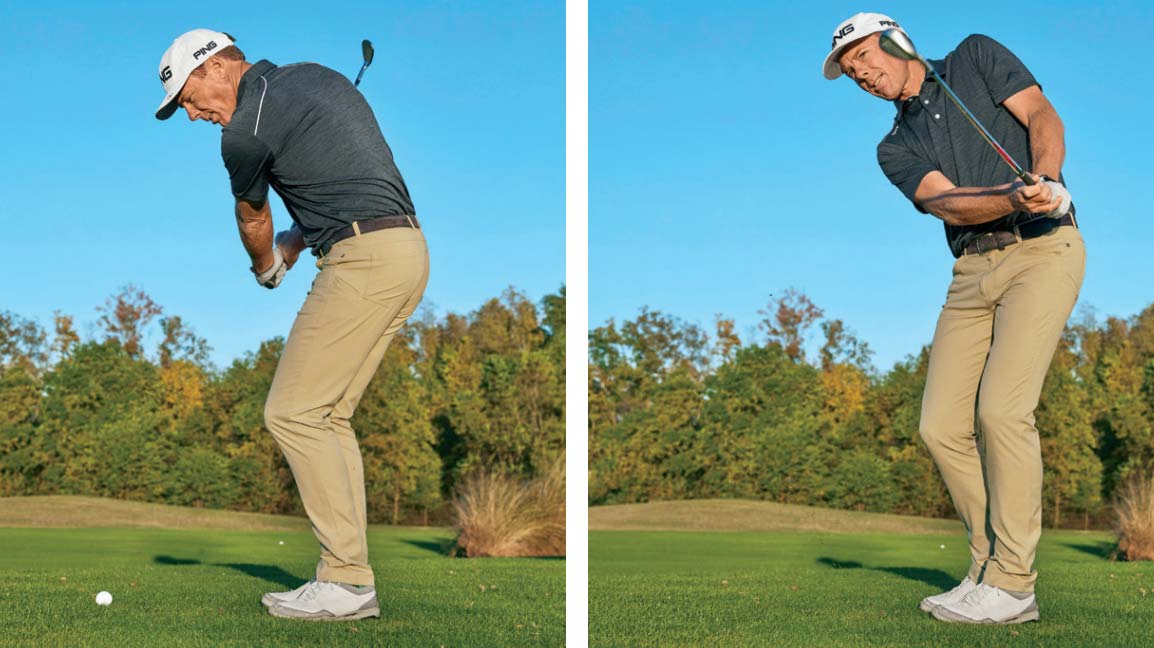
45. A foolproof plan for solid chips
Perfect chips happen when you put a good, solid strike on the ball. Here's how to do it: At address, set your feet about a clubhead's width apart, which will make it easy to keep your weight on your front foot (at least 70 percent). After completing your backswing, think "rotate and rise." Simply turn your torso and release the club upward. Good basics like this never go out of style. —Andrew Rice
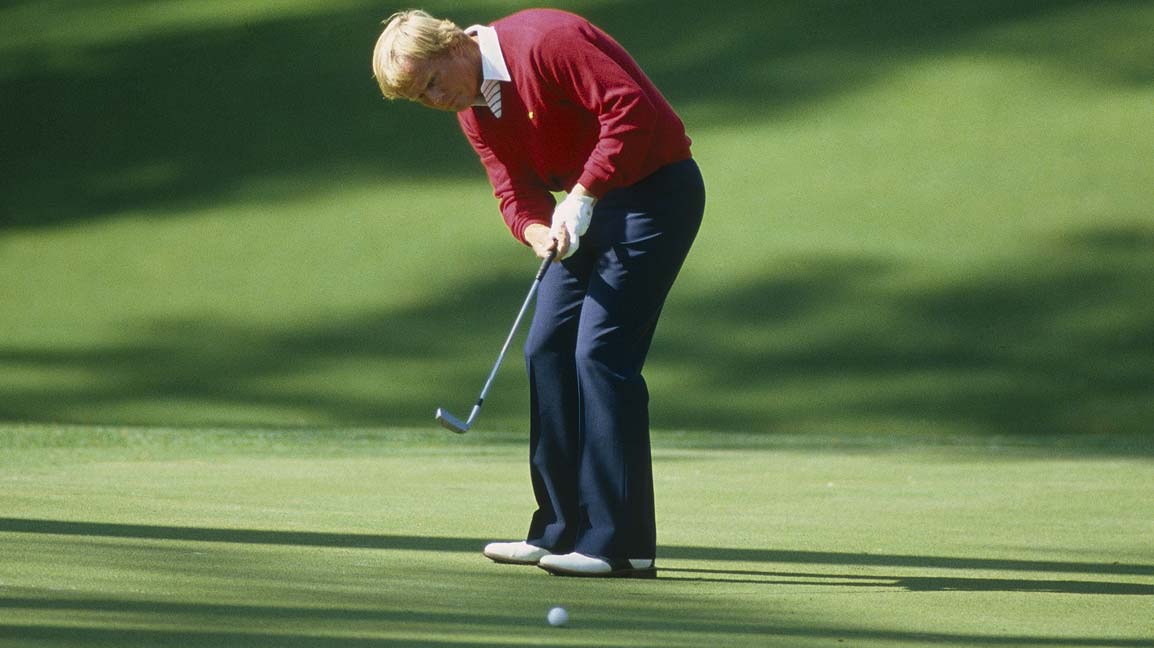
46. Classic keys to putting consistency
There's no such thing as "perfect posture" when it comes to putting. The last thing you want is to feel rigid while you're standing over a five-footer to save par. Take a lesson from Jack: His classic hunched-over position is what allowed him to remain relaxed and tension-free. Check out how the shaft lines up with his lead forearm and how his lead elbow is moving forward and folding up slightly in his follow-through. He's neutral and balanced, using his head tilt to make sure he started the ball on line. My guess? Nicklaus made this one! —Joe Plecker
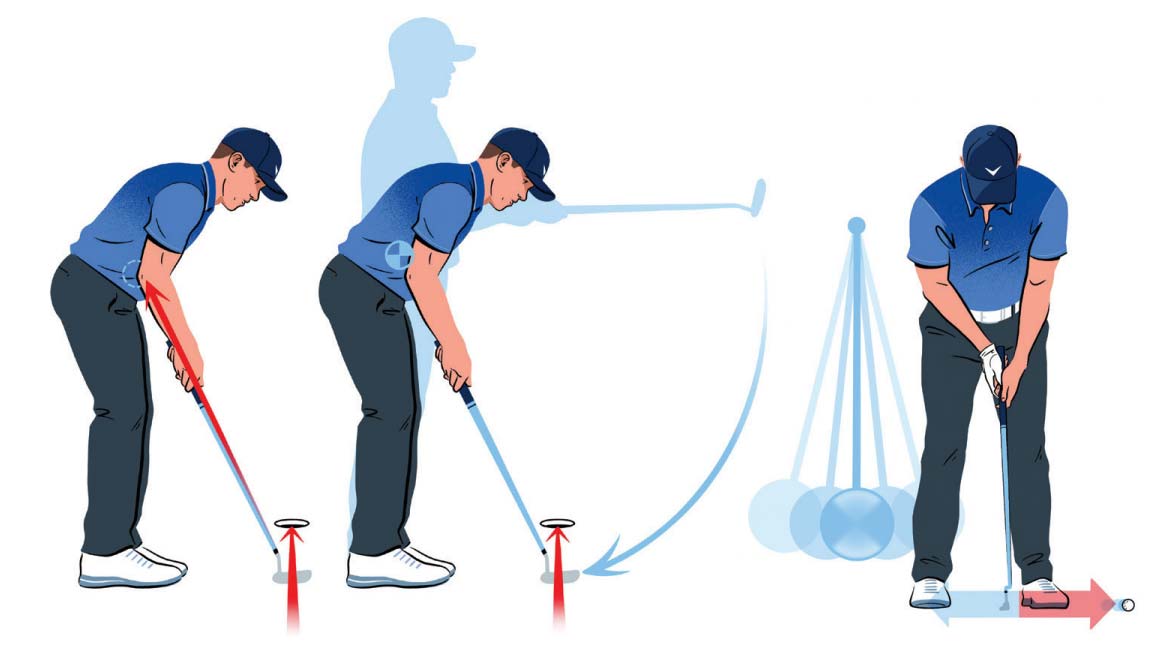
47. Putt like clockwork
Picture a pendulum swinging freely back and forth. That's exactly how you want to motion your putter—with consistent backstroke and through-stroke lengths. A pendulum-like action encourages the putter to travel at an even pace and reach top speed just before impact. Often, players will accelerate at the ball, but this leads to a "yippy" stroke and poor distance control.
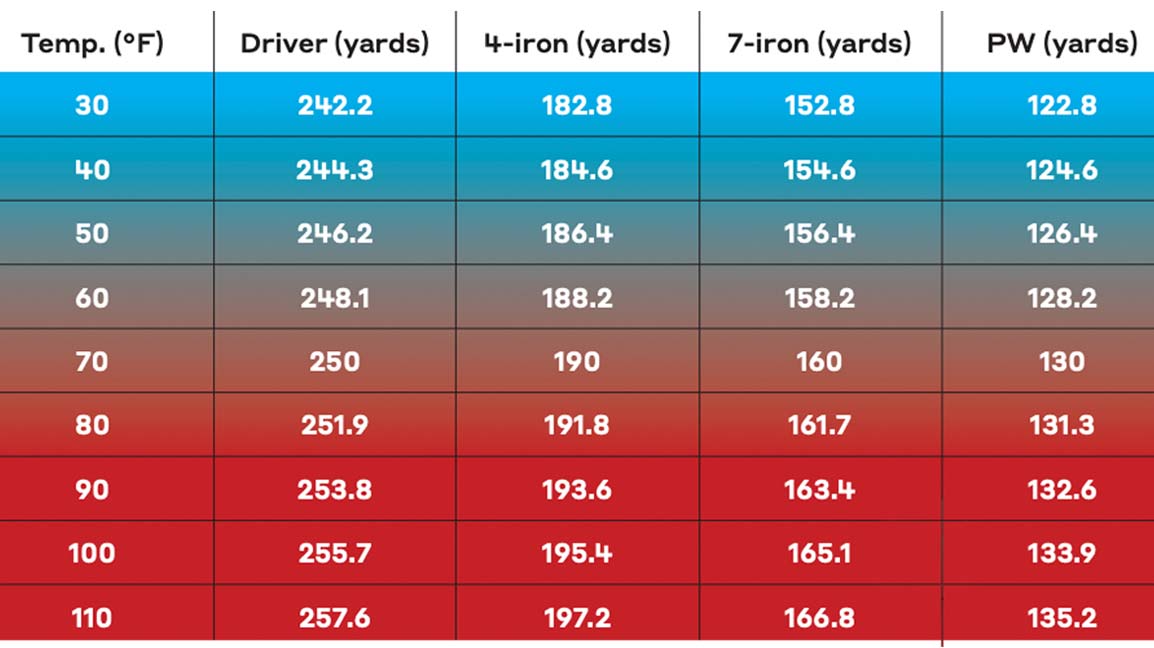
48. Take your game's temperature
Have you ever noticed how the ball seems to be affected by weather? That's because it's a real thing. The exact amount your shots will be affected varies, but an average 250-yard hitter can plan to lose or gain about two yards for every 10 degrees of temperature change.
Source: Andrew Rice Golf
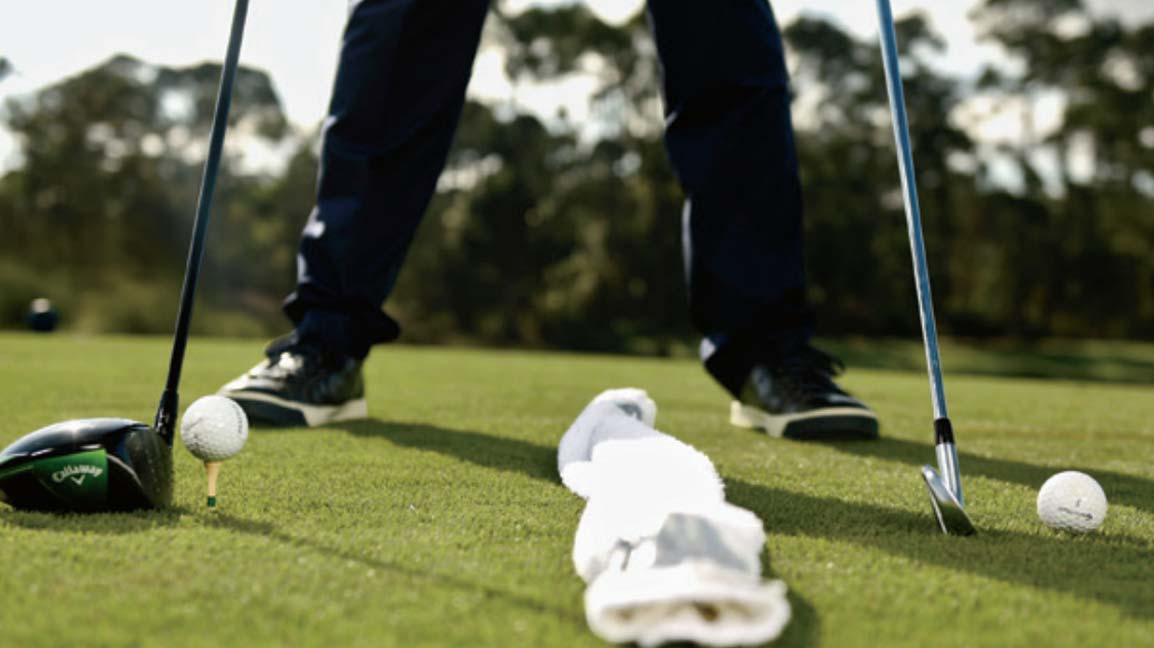
49. Groove the right strike
A very simple yet valuable skill is the ability to hit up on the ball with a driver and down on it with an iron. Use a towel to help train both motions. With iron, place the ball in front of the towel, a grip's length away. With driver, place the ball behind the towel. Your goal with either club is to catch the ball but not the towel, promoting a descending blow with one and an upward strike with the other. —Jeff Leishman
50. Insta tip: Keep a steady head
View this post on Instagram
#playingthrough
A post shared by GOLF.com // GOLF Magazine (@golf_com) on
Place a ruler on top of a mantel or dresser, one that's just taller than your head and another that's about chin height. Make mock swings without disrupting the ruler. Now you're steady — and solid. #moggacademy
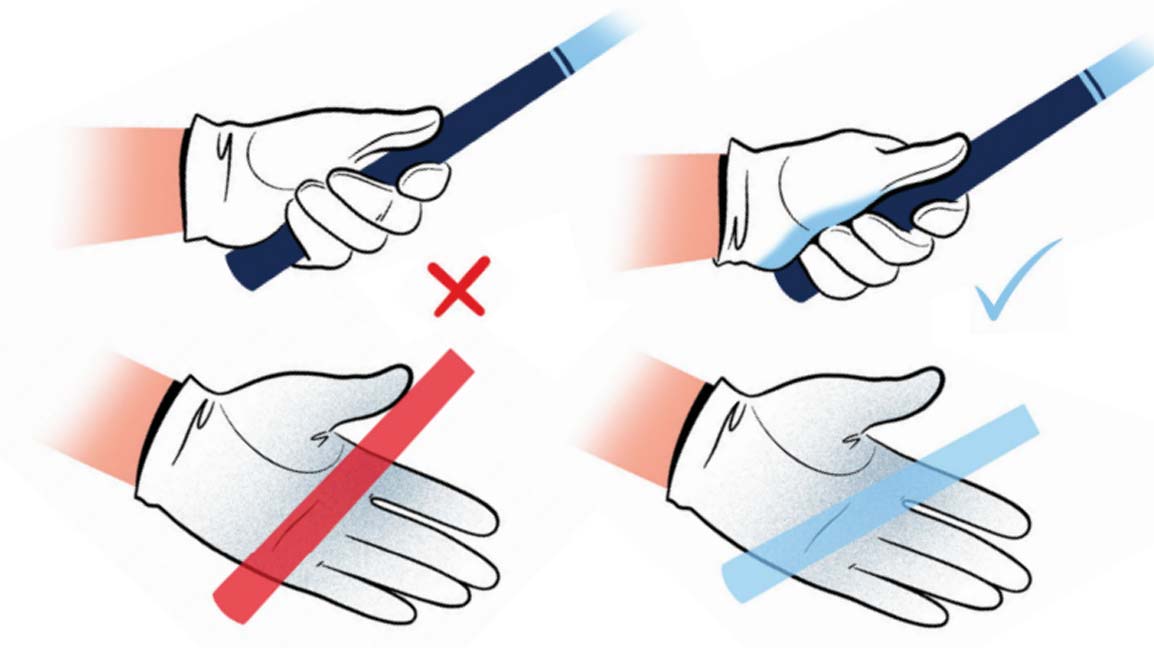
51. The right way to take a speed grip
The more the grip rests in your palm, the harder it is to hinge and create power. The opposite is true when the handle is in your fingers. Set the grip diagonally across your digits as shown in the illustration above right, and then wrap your thumb pad over the top of the handle. Get ready to pour on the speed.
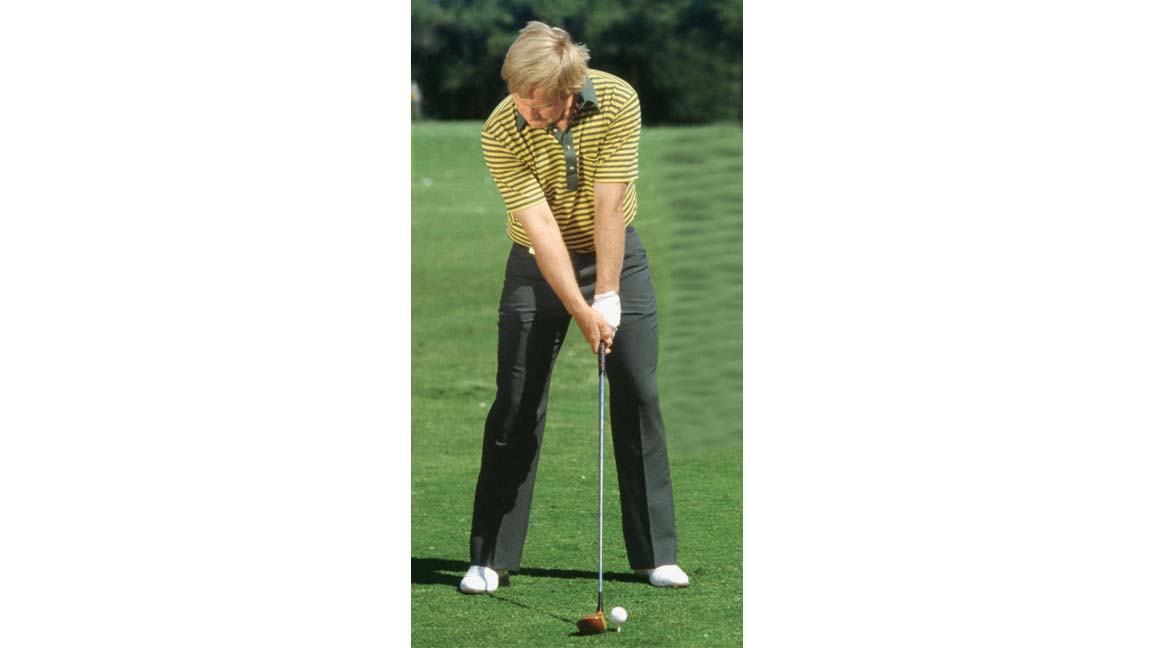
52. Set up for a strong takeaway
Notice Nicklaus' ball position: It's opposite the inside of his left heel, and he's tilted his upper body away from the target slightly. With a higher center of gravity driver (CGs are much lower today), Jack knew he needed to "trap" the ball more to create optimal spin and launch, instead of hitting up on it like current-day pros. Copy the straight line established by the shaft and his lead arm. It's an easy way to activate your hands, arms and club for a smooth, power-rich takeaway. —Joe Plecker

53. Master tight-lie chips
In Australia, where I'm from, the fairways are usually pretty dry, so you have to know how to hit pitches and chips off tight, hardpan lies. The setup is the same as a normal chip shot, with the clubface slightly open and the ball position slightly forward. The real key to these shots is taking your arms and wrists out of it; it's a body shot. Turn back and turn through. —Cameron Smith
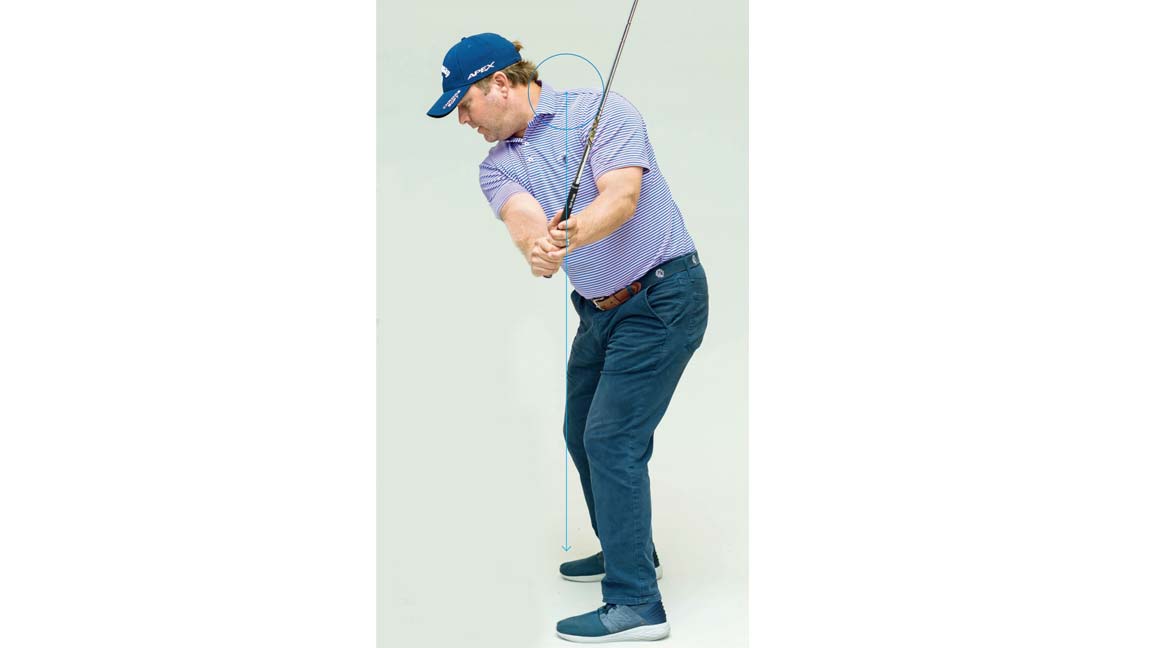
54. A simple move for perfect balance
Your body's primary job is to establish balance so you don't fall down or get hurt when you move. Where your swing is concerned, common errors such as early extension are nothing more than the result of a loss of balance or a means to adjust for poor address alignment. Here's an easy fix: Set up in a balanced posture where the top of your spine is directly over the balls of your feet. From this position it's a lot easier to swing in balance. Your ball flight and control will thank you. —John Tillery

55. Level the box
To get a better feel for swinging from the inside on the downswing (and stop your slice-causing outside-in move), grab a pizza box and hold it level at the top of your backswing. From there, simulate your downswing, keeping the box level and your arms soft. To add some more flavor to this drill, throw the box down the target line post-impact, finishing with the palm of your trail arm facing down. This is the rotation and speed you need for powerful strikes. —John Dunigan
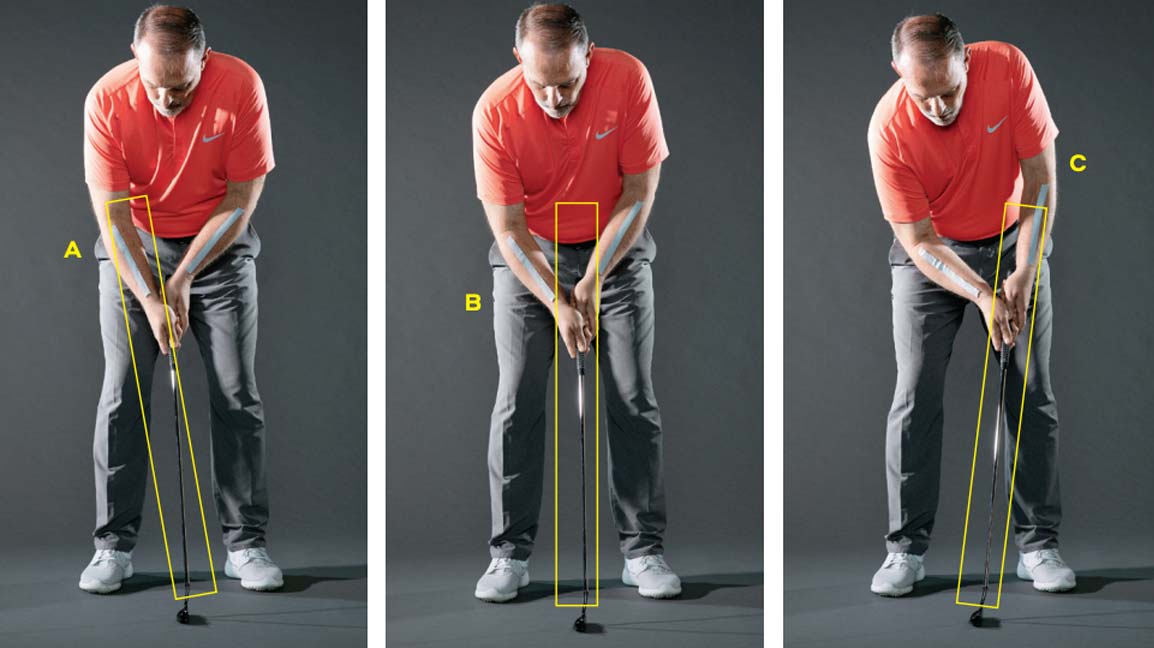
56. Putting with consistency
If you struggle with consistency on the greens, it might be because you're not making contact with the ball from the same position from putt to putt. Improve your consistency by deciding what kind of address alignments work best for you. If you prefer to add loft at impact, align the putter shaft more with your trail arm (A). If you prefer to keep things neutral, set the shaft so that it bisects your arms (B). Golfers who like to de-loft the putter at impact need to align the putter with the lead arm (C). There isn't a perfect answer. The trick is to pick a style and stick with it. —David Orr

57. Choose the right shaft flex
Based on data from our sister company True Spec, players with 105 mph and more of driver club speed should consider an extra-stiff shaft; a stiff flex for 97- to 104-mph swingers; regular flex for 84 to 96 swingers; senior flex for the rest.

58. The perfect pivot
As a student of the game, it's important to learn the dynamics involved in your swing. Do this: Get into address and press your right-hand fingers to your sternum. Turn back—your chest should face away from the target, parallel with your line (because your torso is extending). Next, turn through— check that your chest points toward the target and slightly skyward, due to the addition of needed side tilt. Copy these positions and your swing can't miss. —Jon Tattersall
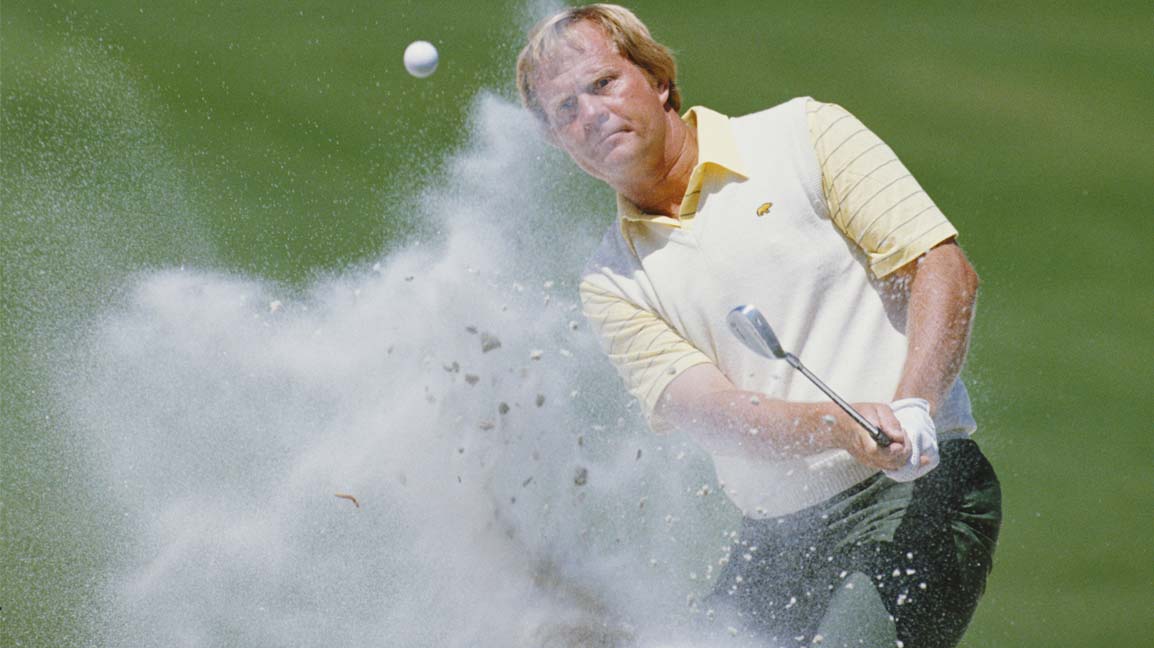
59. Let the club do the work in sand
Jack Nicklaus was a master bunker player. One of the things that made him great was his ability to exploit the bounce angle on his wedges so that the club would glide smoothly through the sand instead of dig into it. He did it by positioning the ball in line with the instep of his front foot, weakening his hold (called a "finesse grip") and allowing the clubface to open. With this arrangement, he simply let the "club do the work" once it impacted the sand. He often said, "Don't let the handle swing past your hands until the clubhead releases." On shots that needed height and a soft landing, he'd simply increase his wrist hinge. Classic, brilliant stuff. —Kellie Stenzel
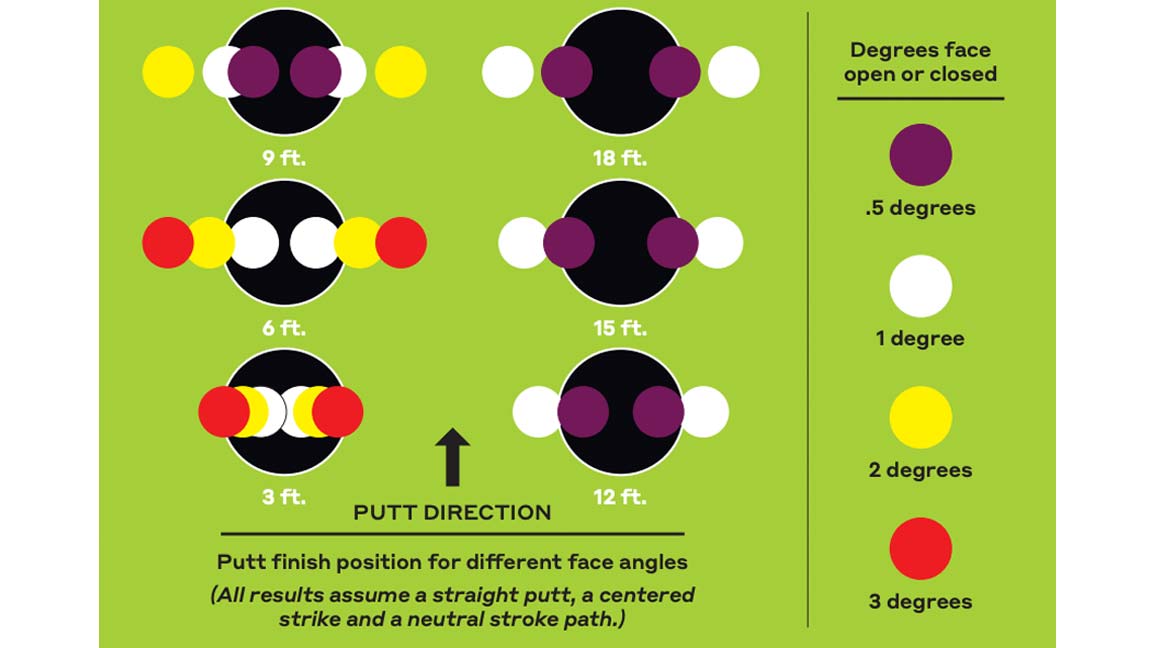
60. Keep the putter square — or else
Putterface angle at impact matters a ton. If you need proof, check the chart above. Even if the face rotates open or closed as little as 2 degrees through the ball, you'll miss from as short as six feet.
Source: @JJGolfPutting

Golf Magazine
Subscribe To The Magazine
Subscribe
Latest In Instruction
Source: https://golf.com/instruction/60-essential-tips-every-golfer-needs-know/

0 Response to "Funny Golf Instructor Snap Load My Feet"
Post a Comment